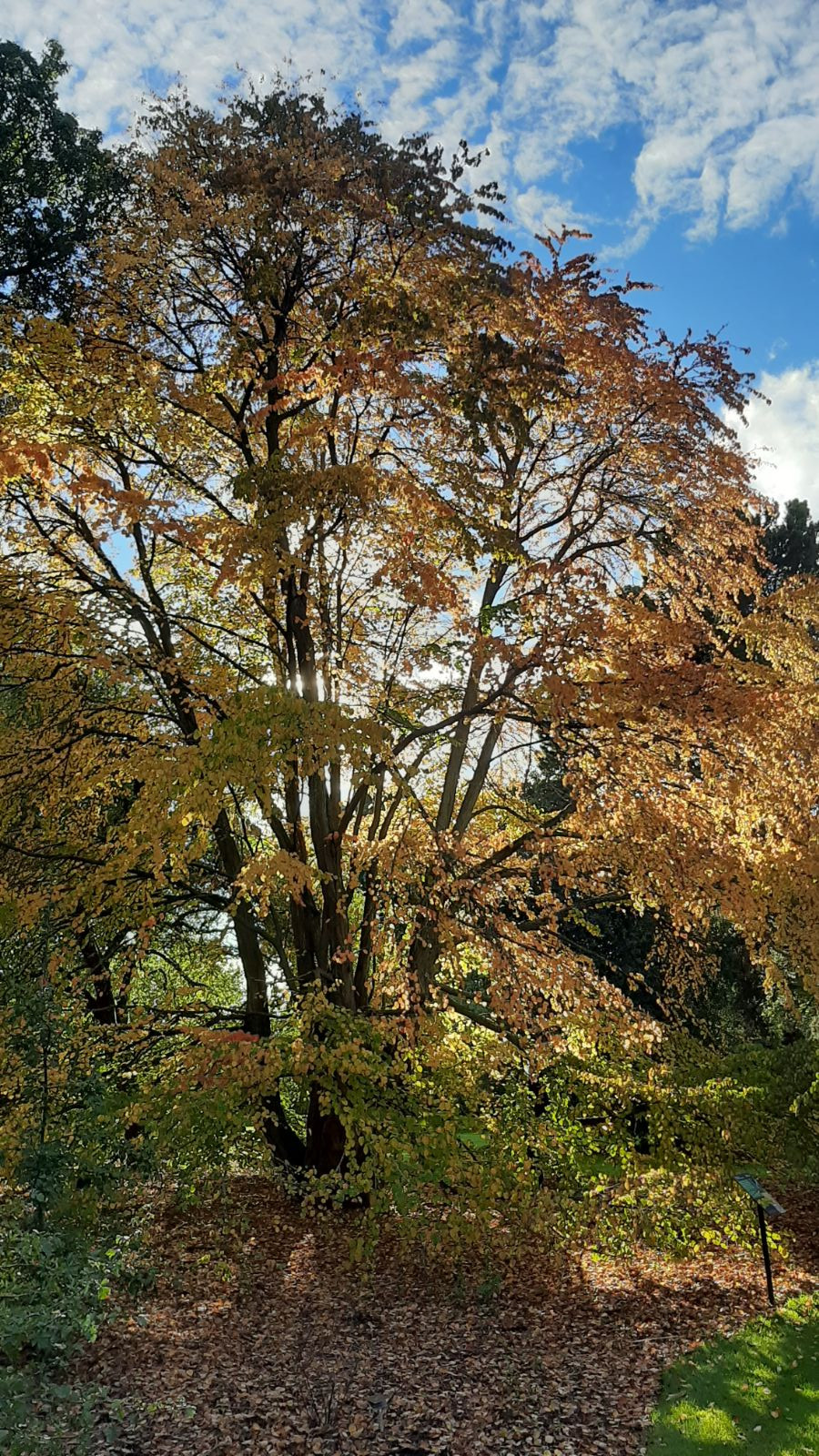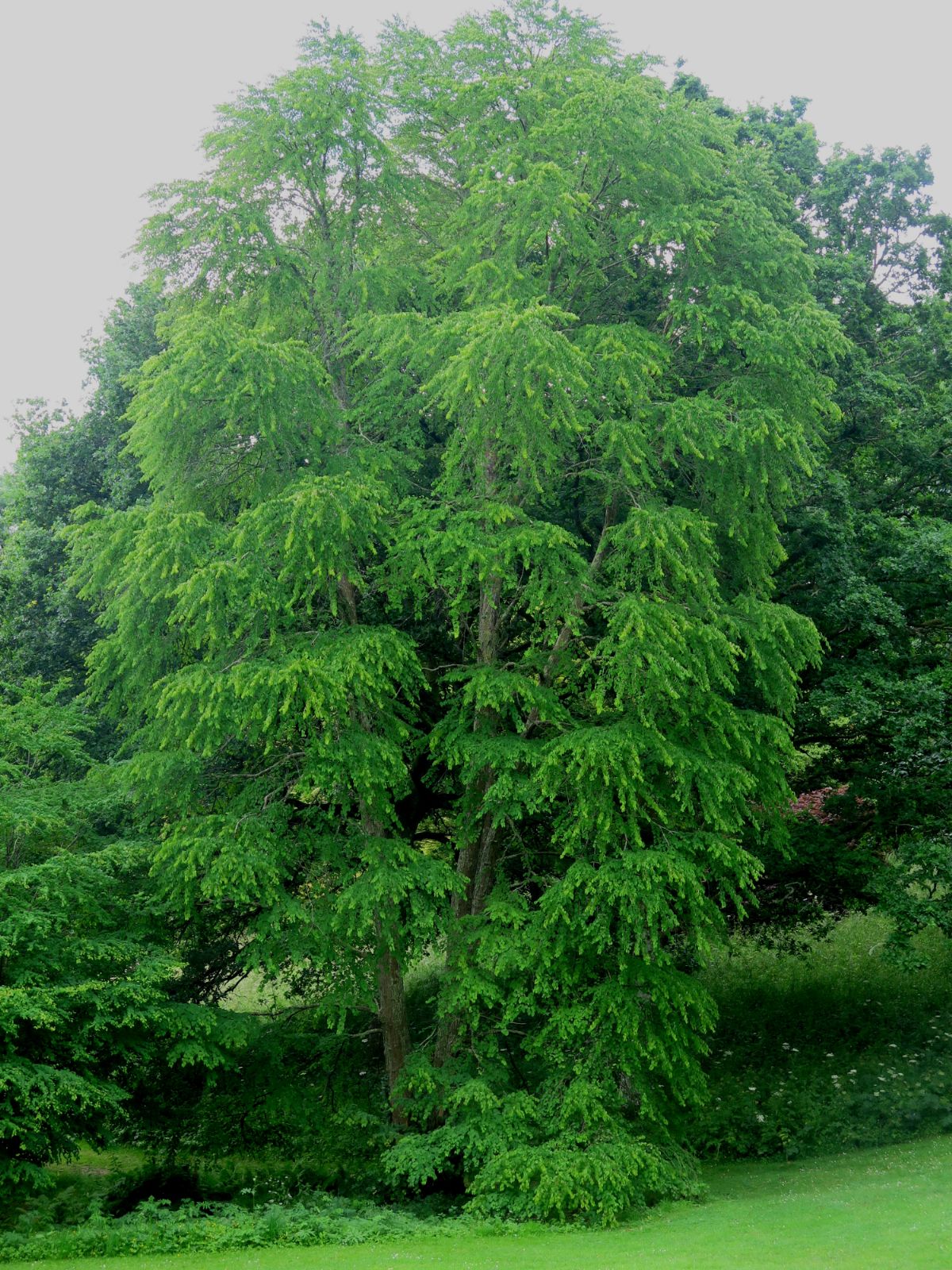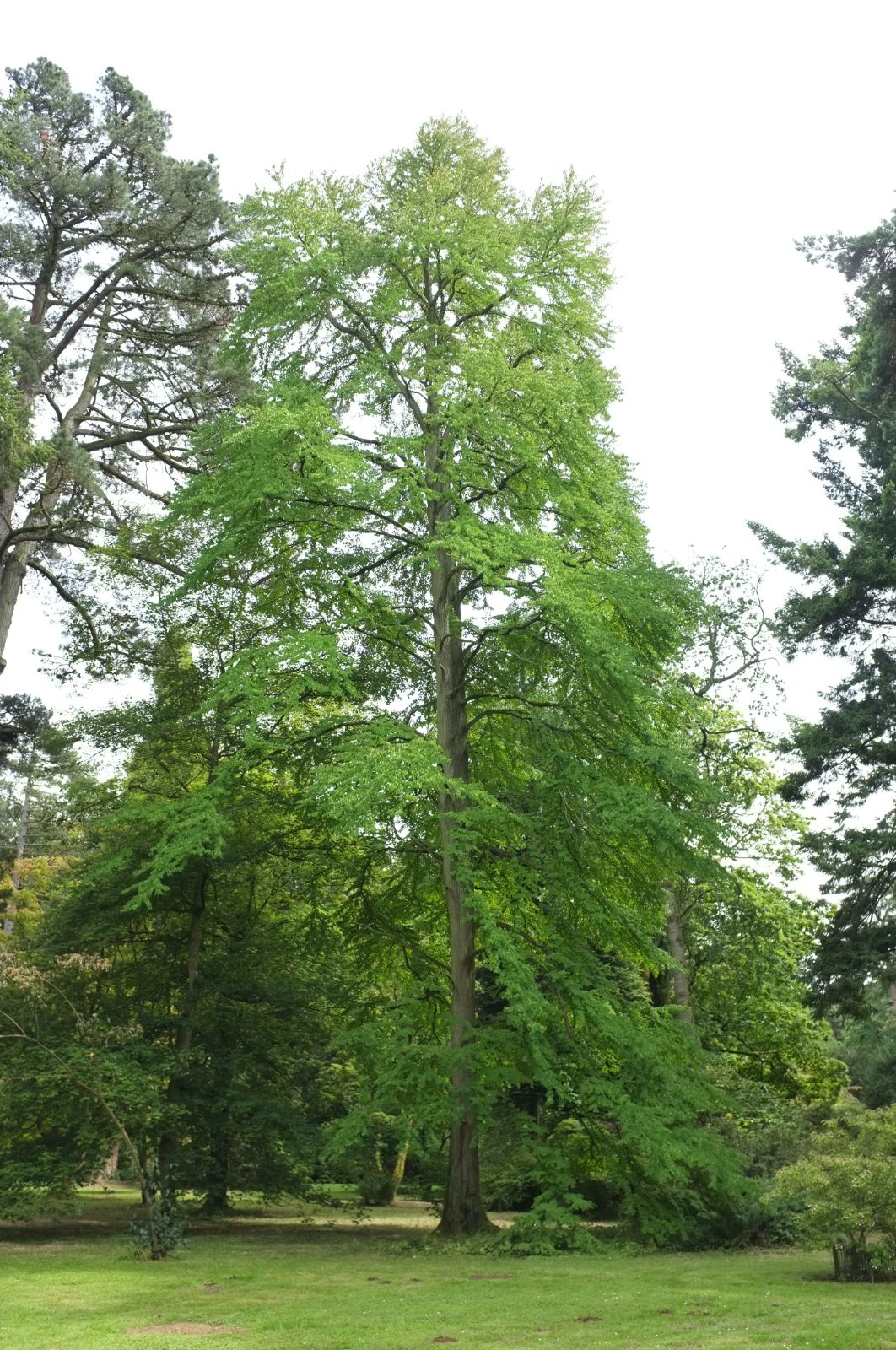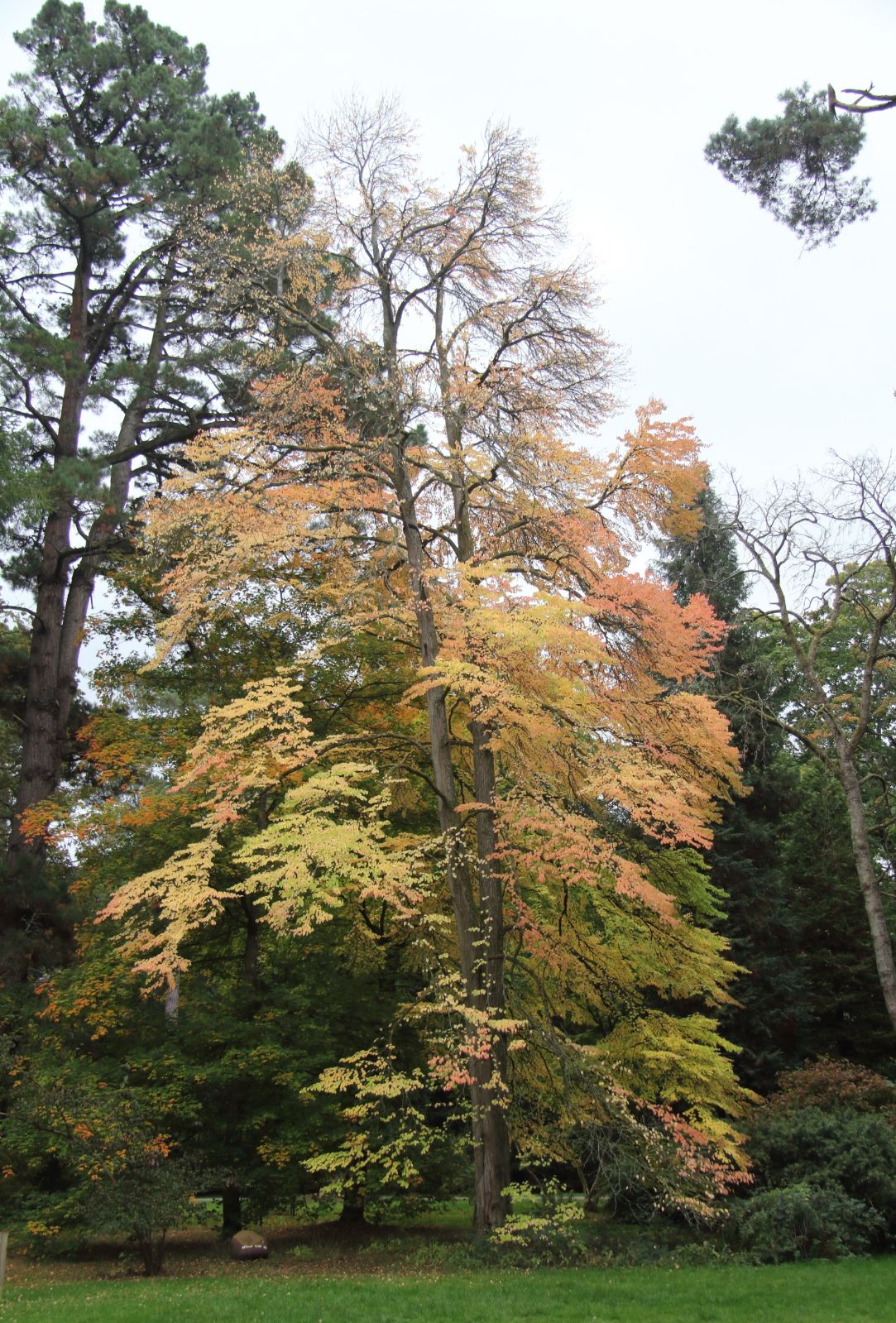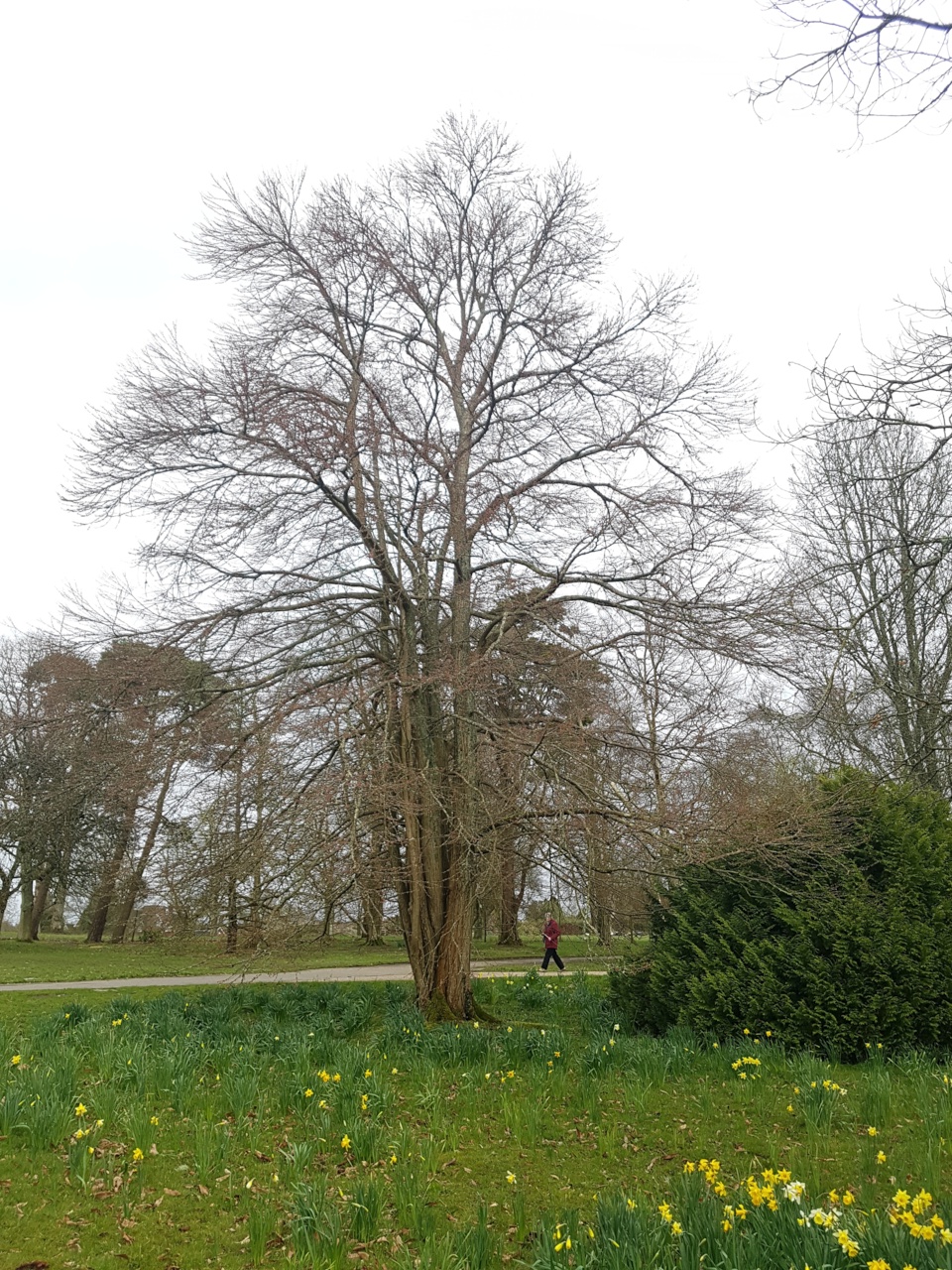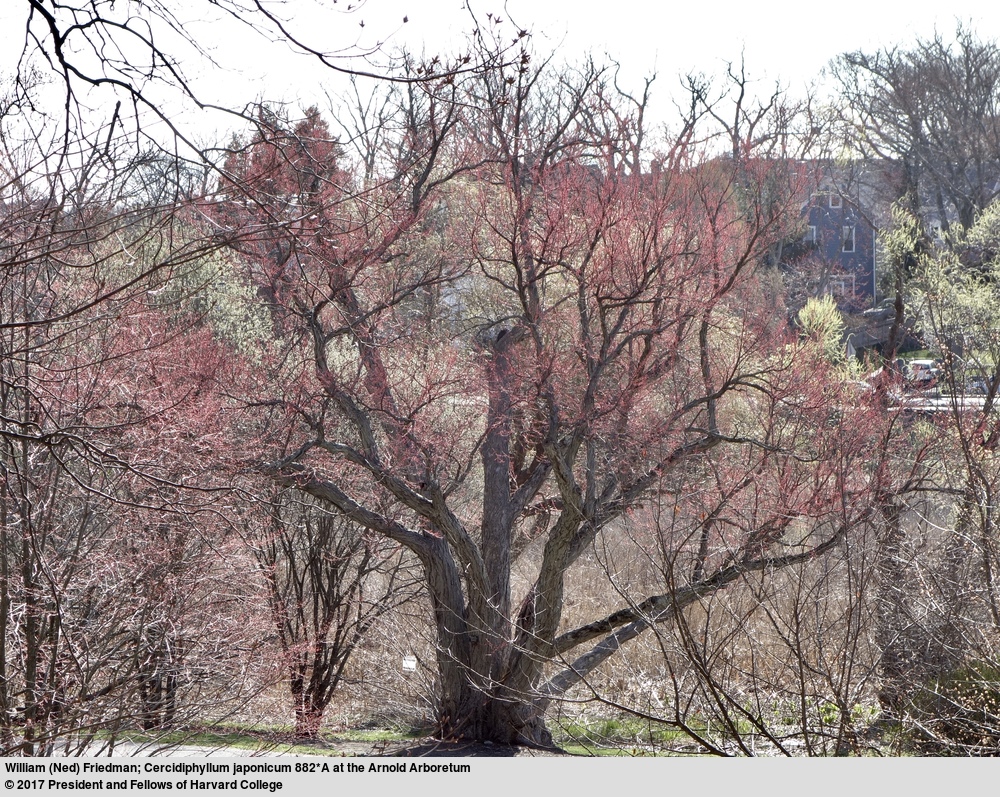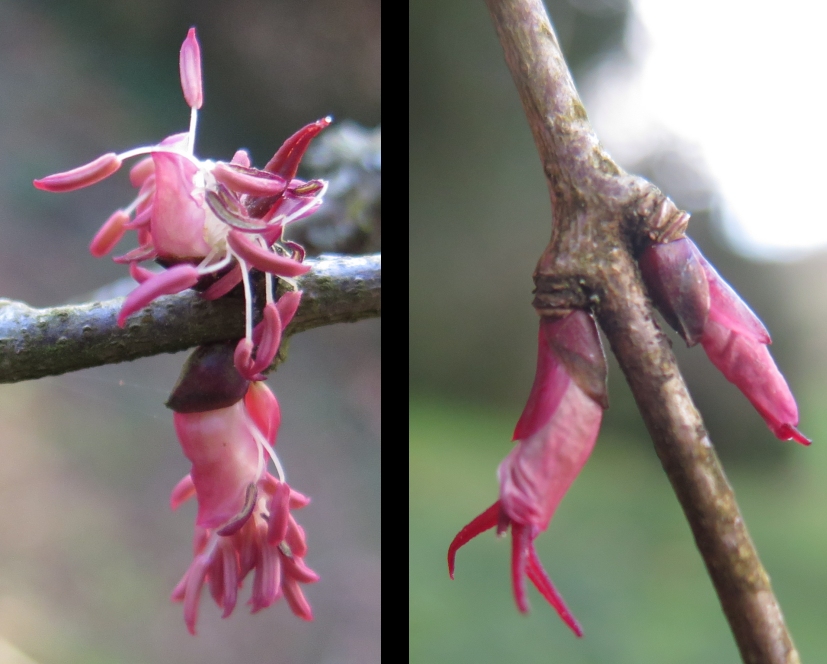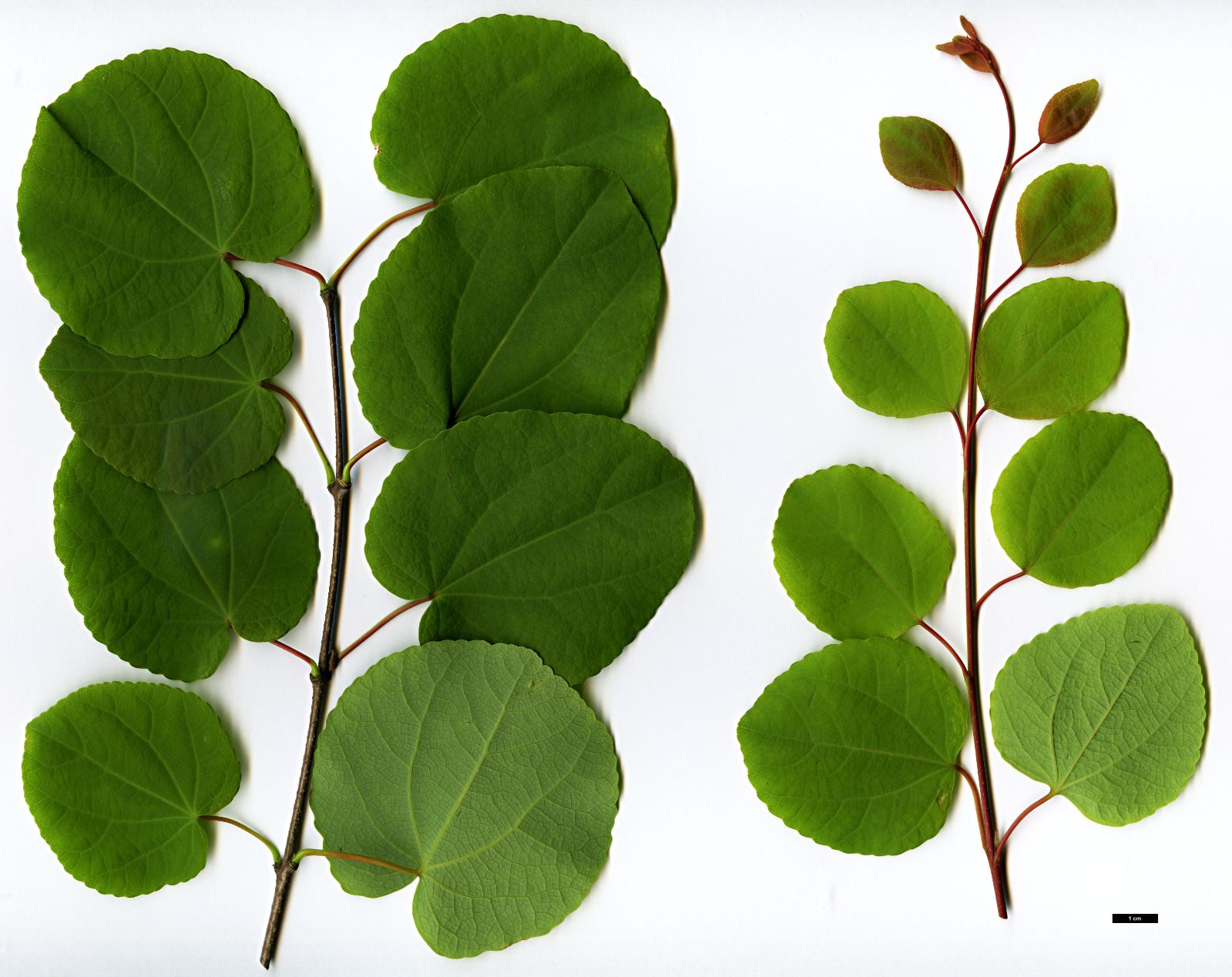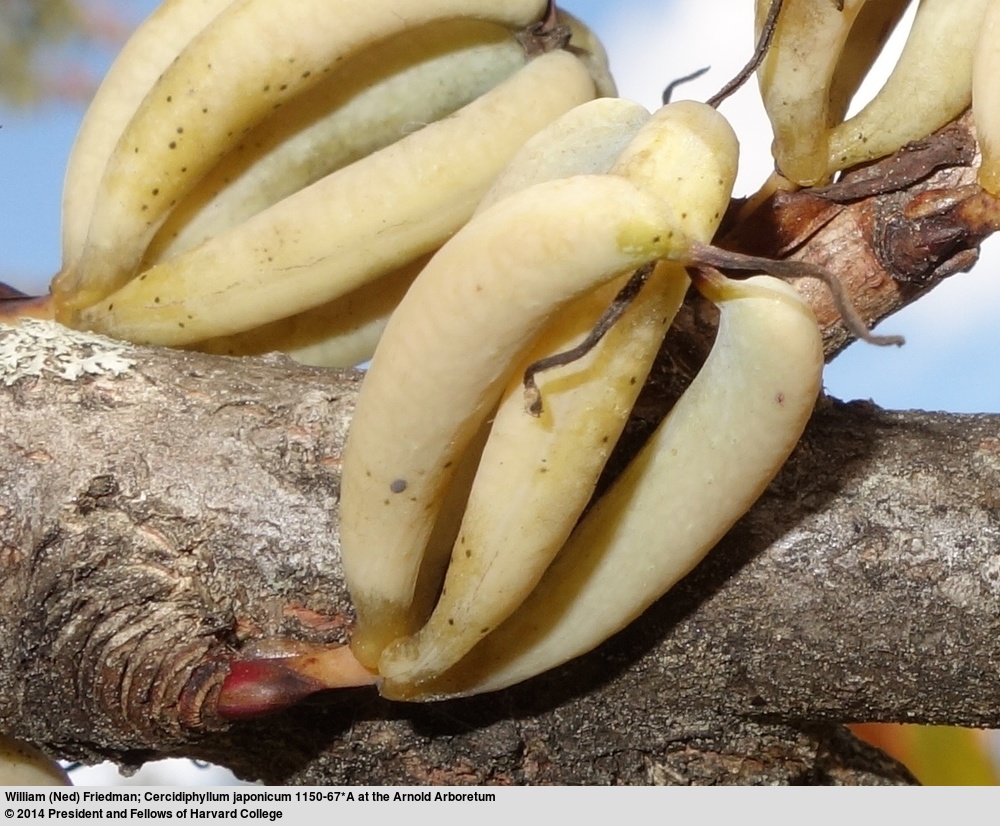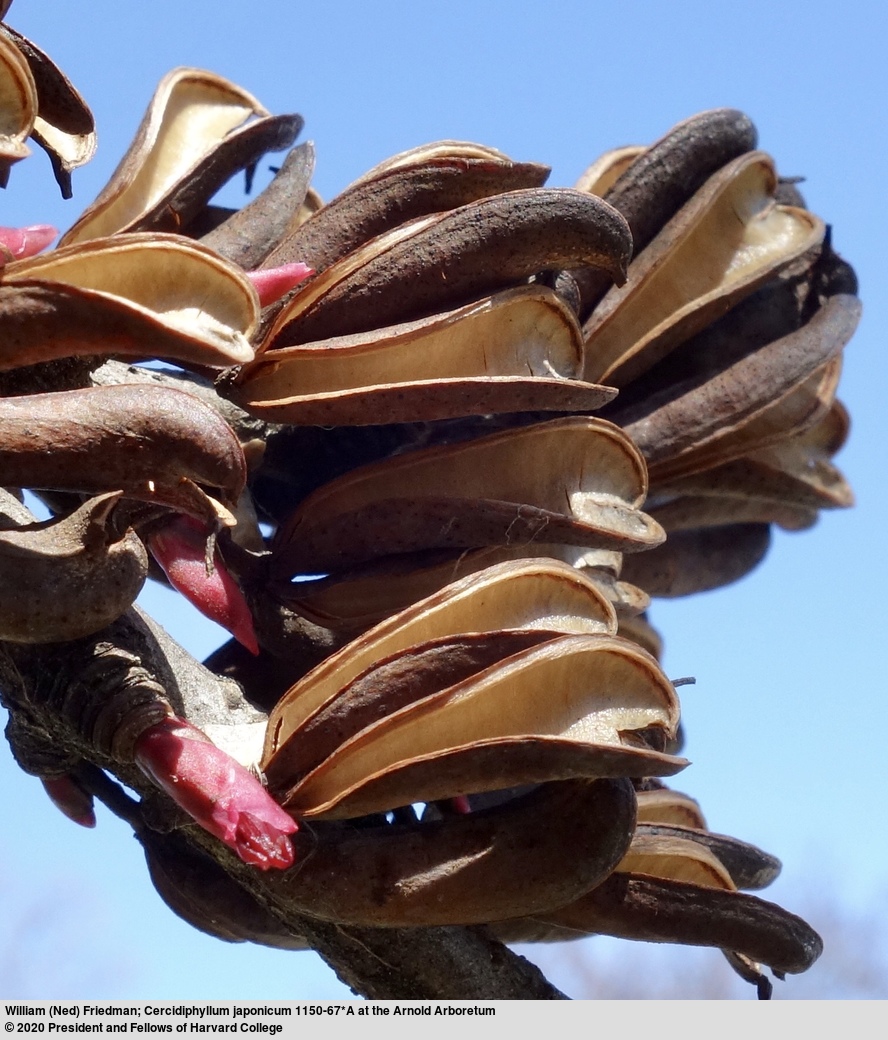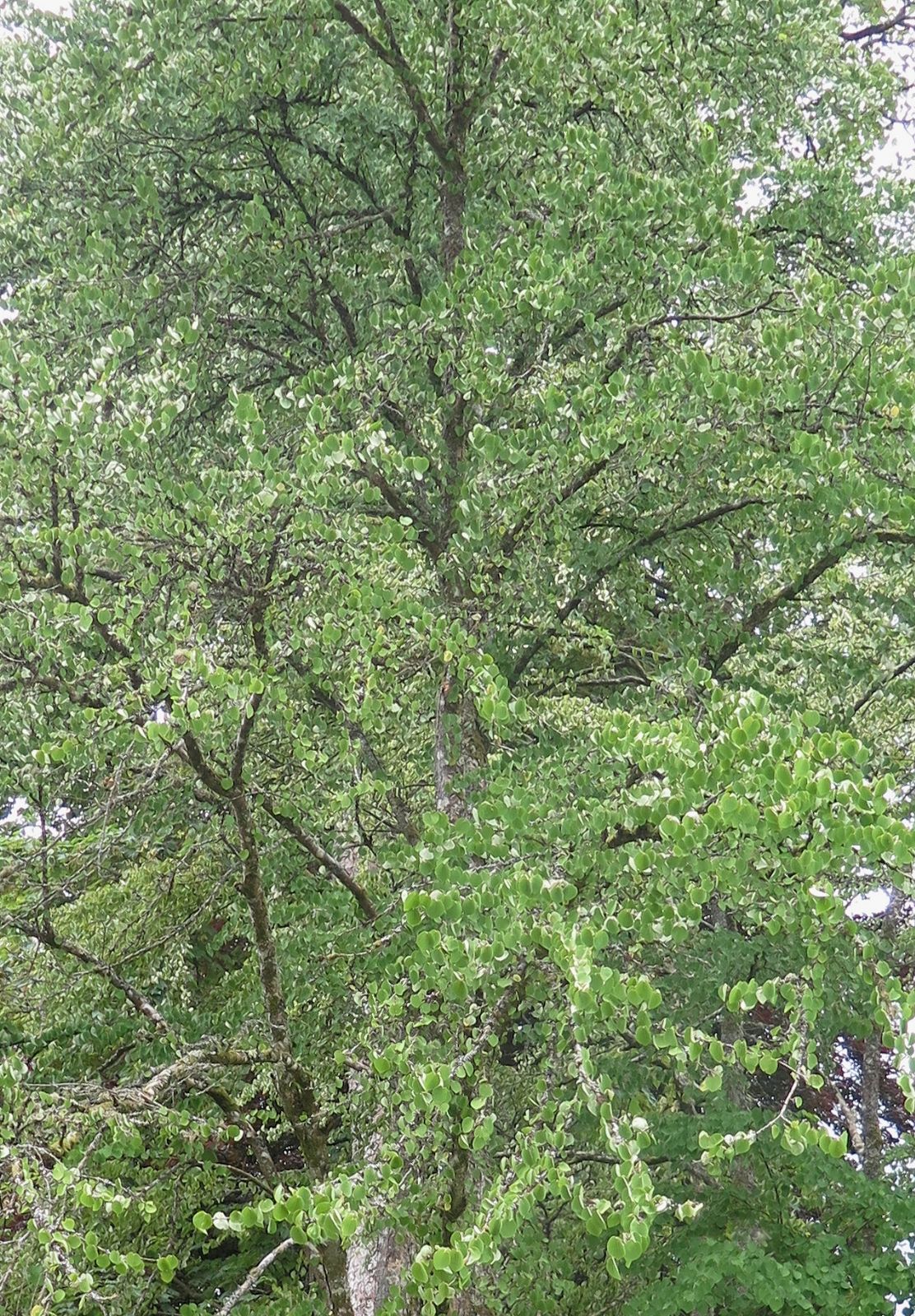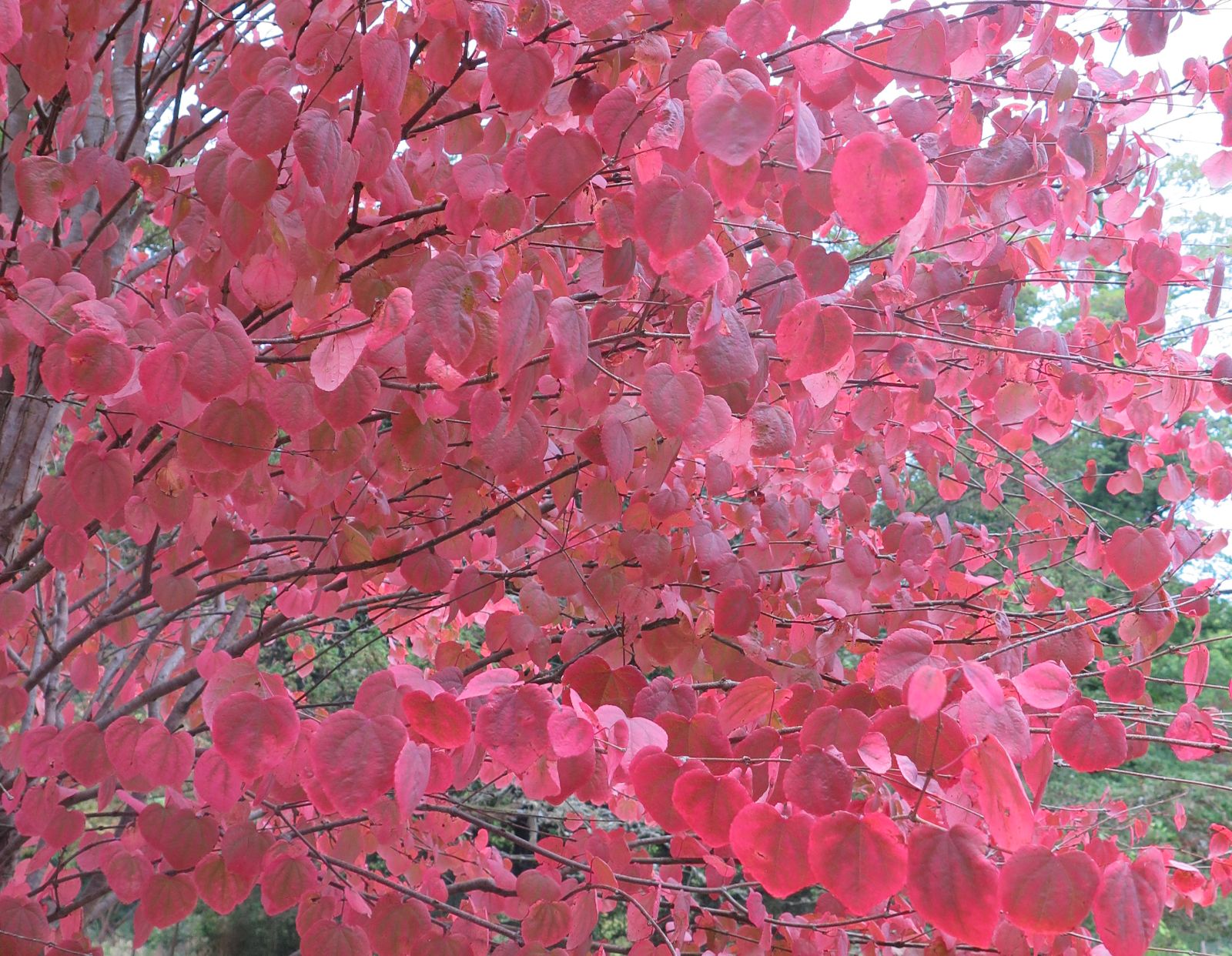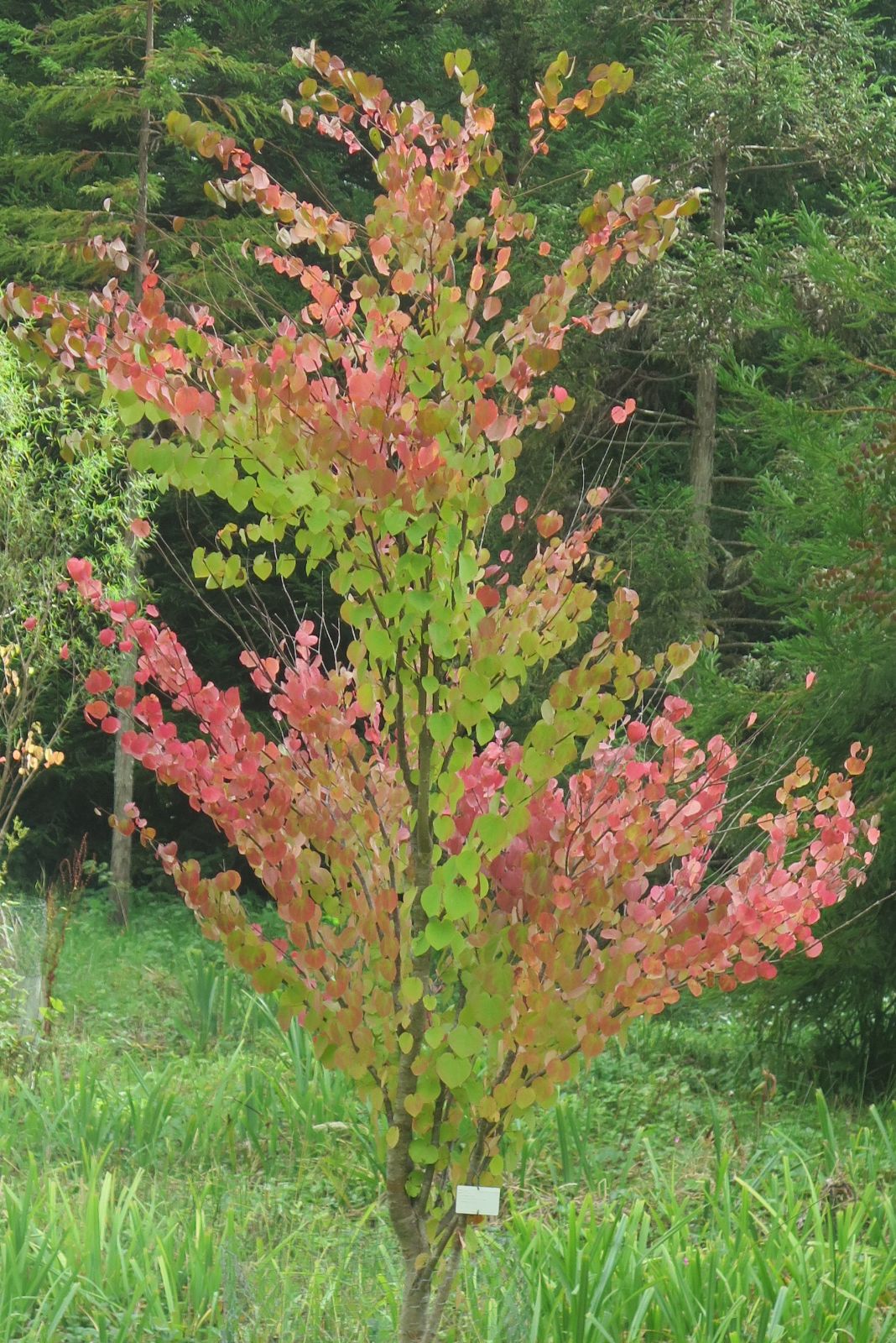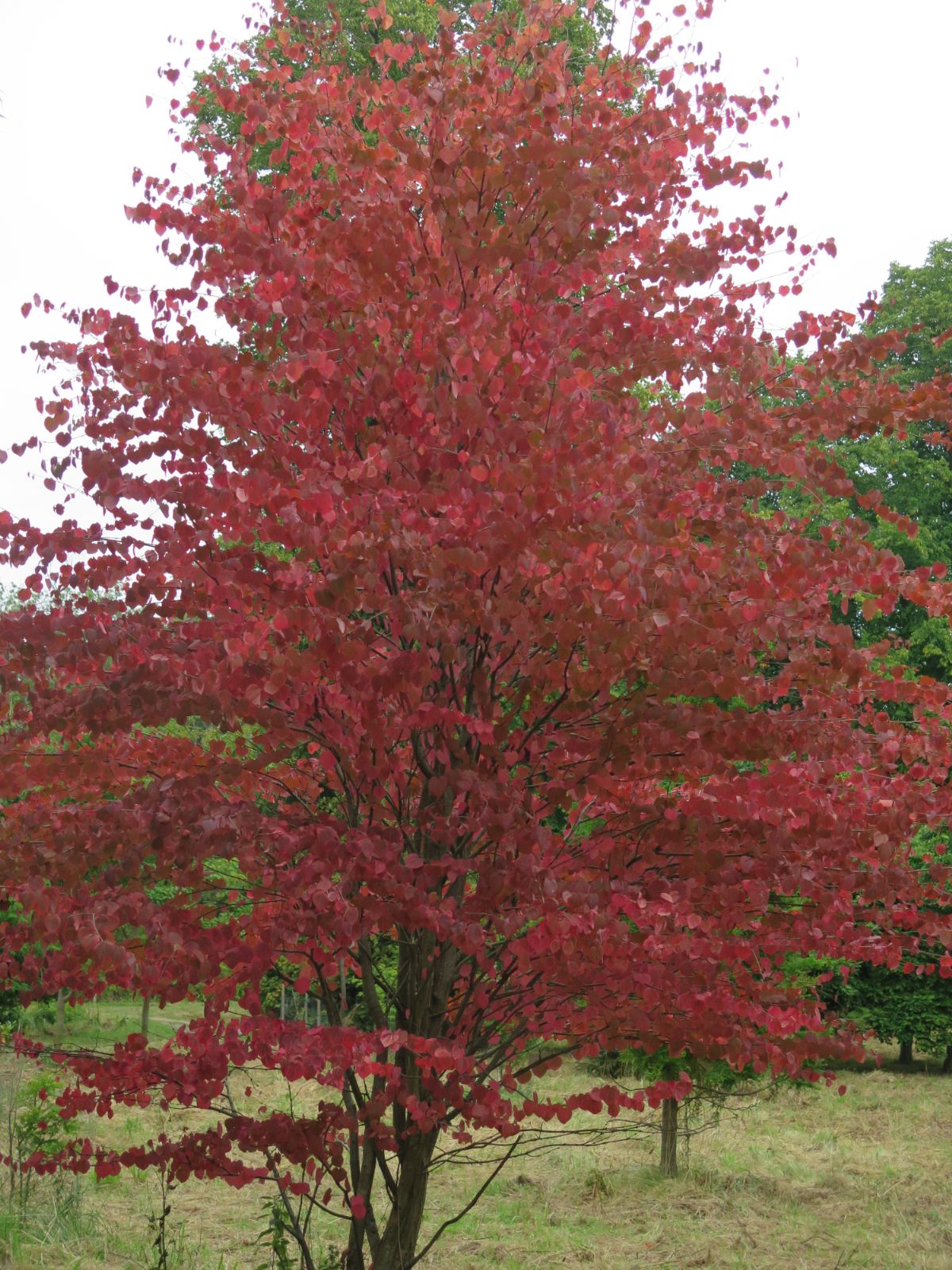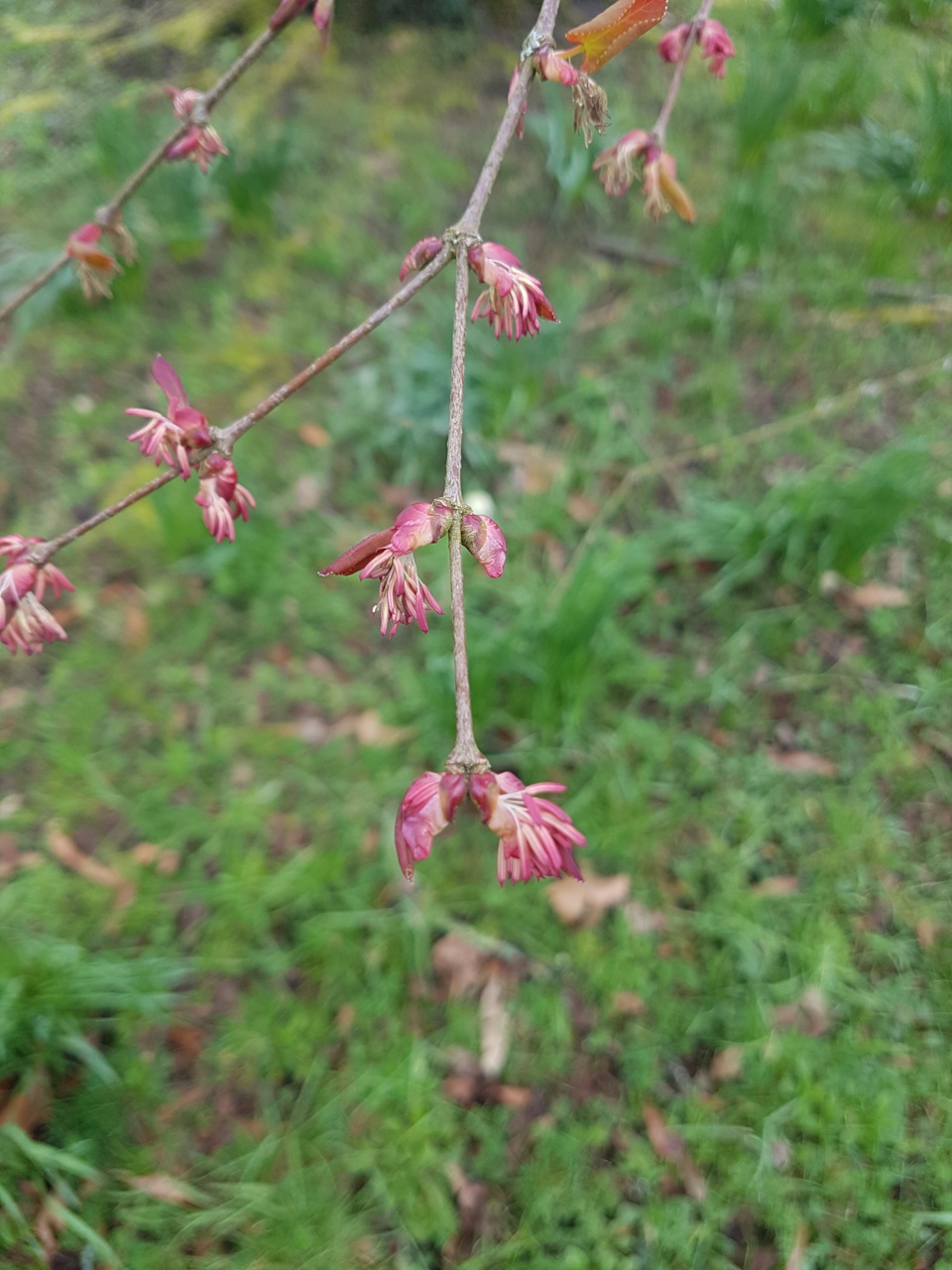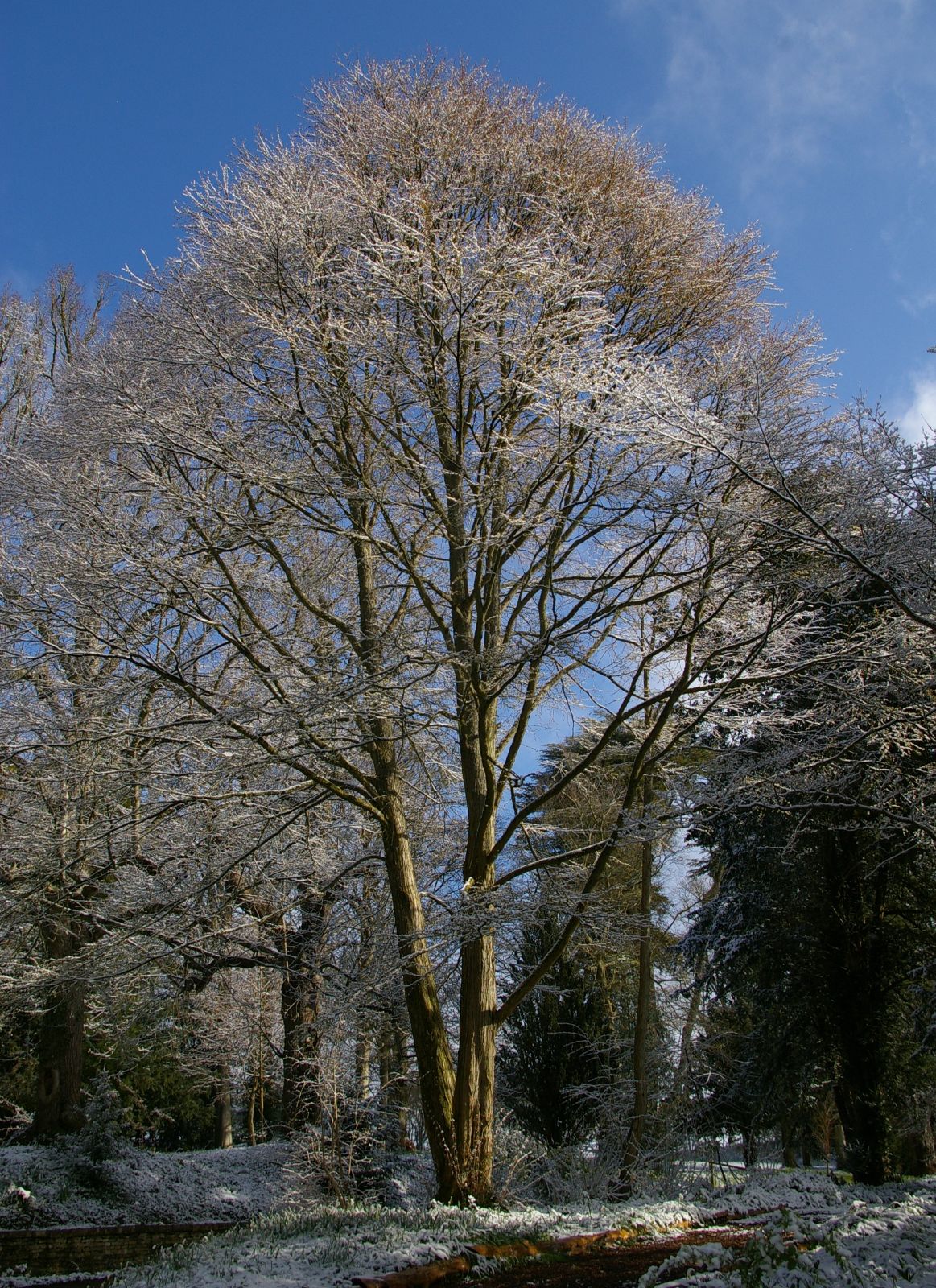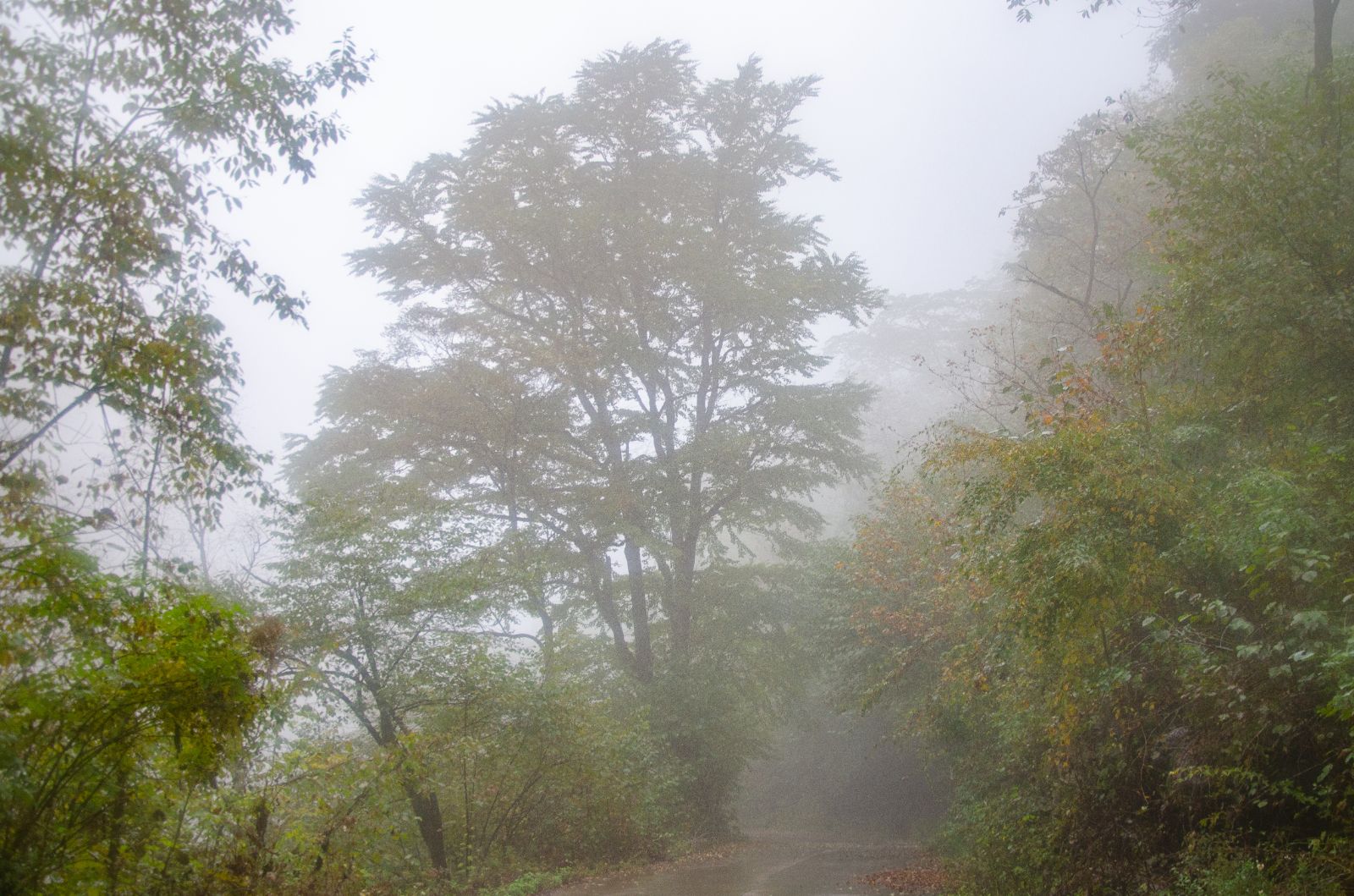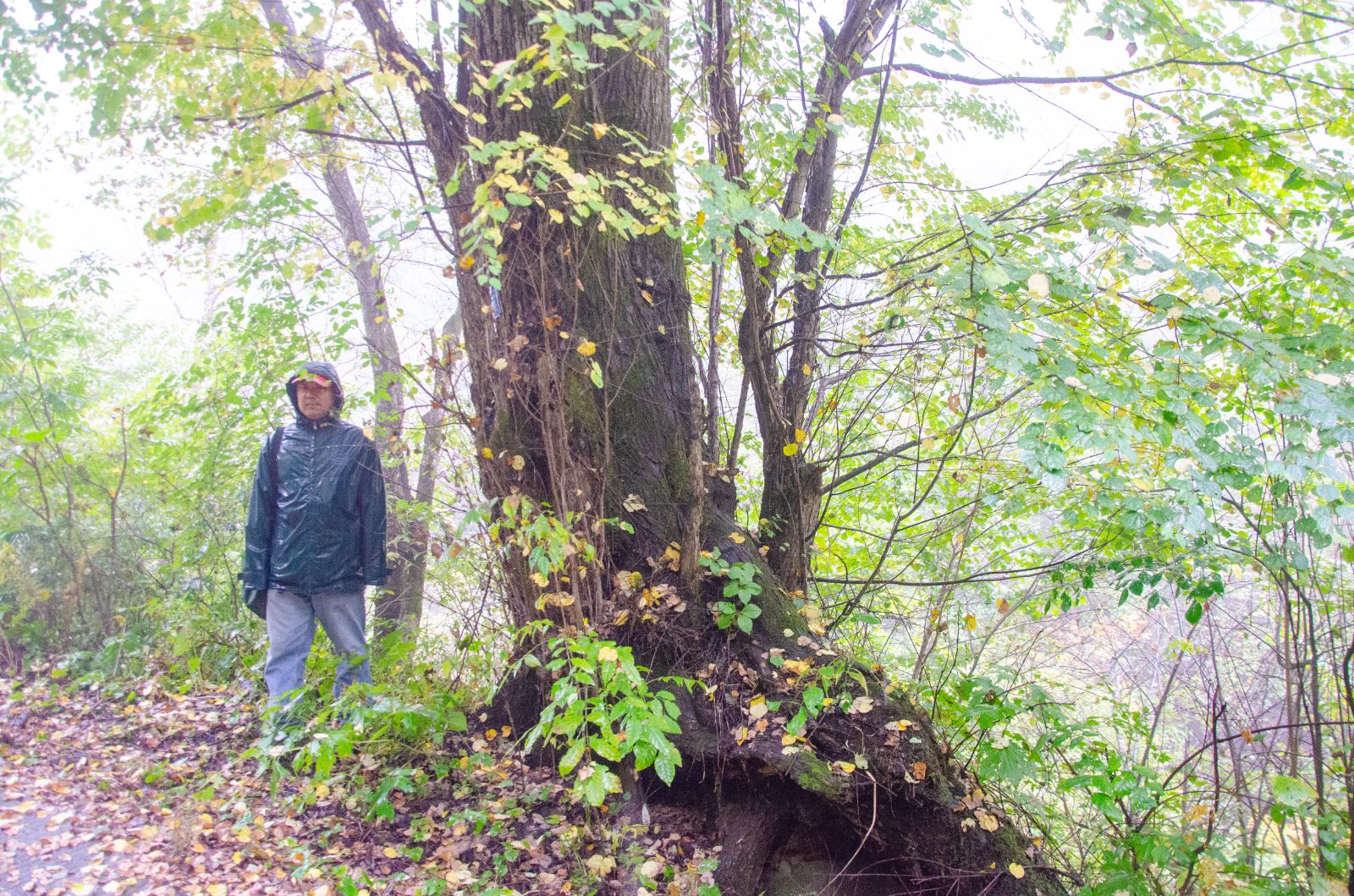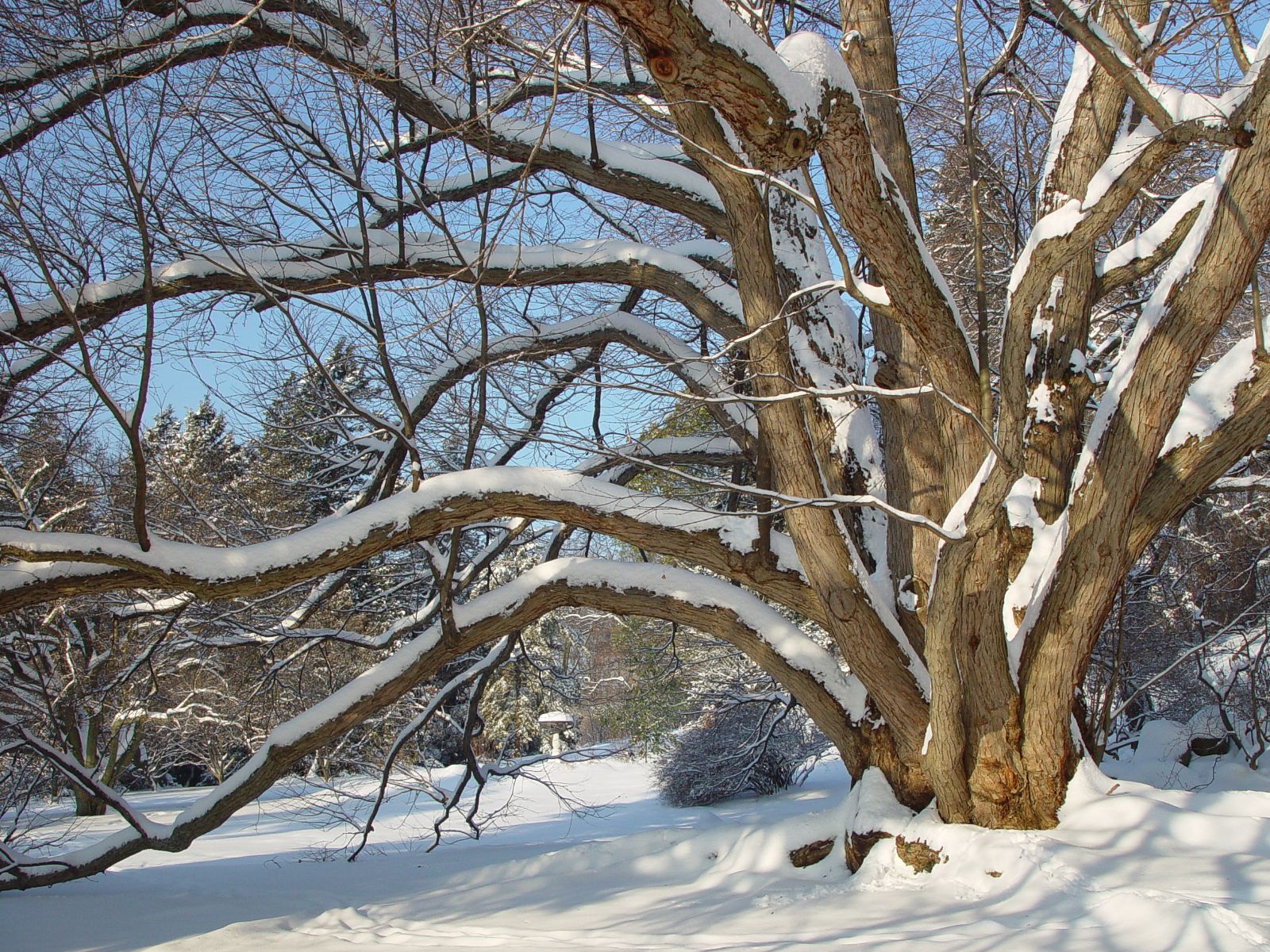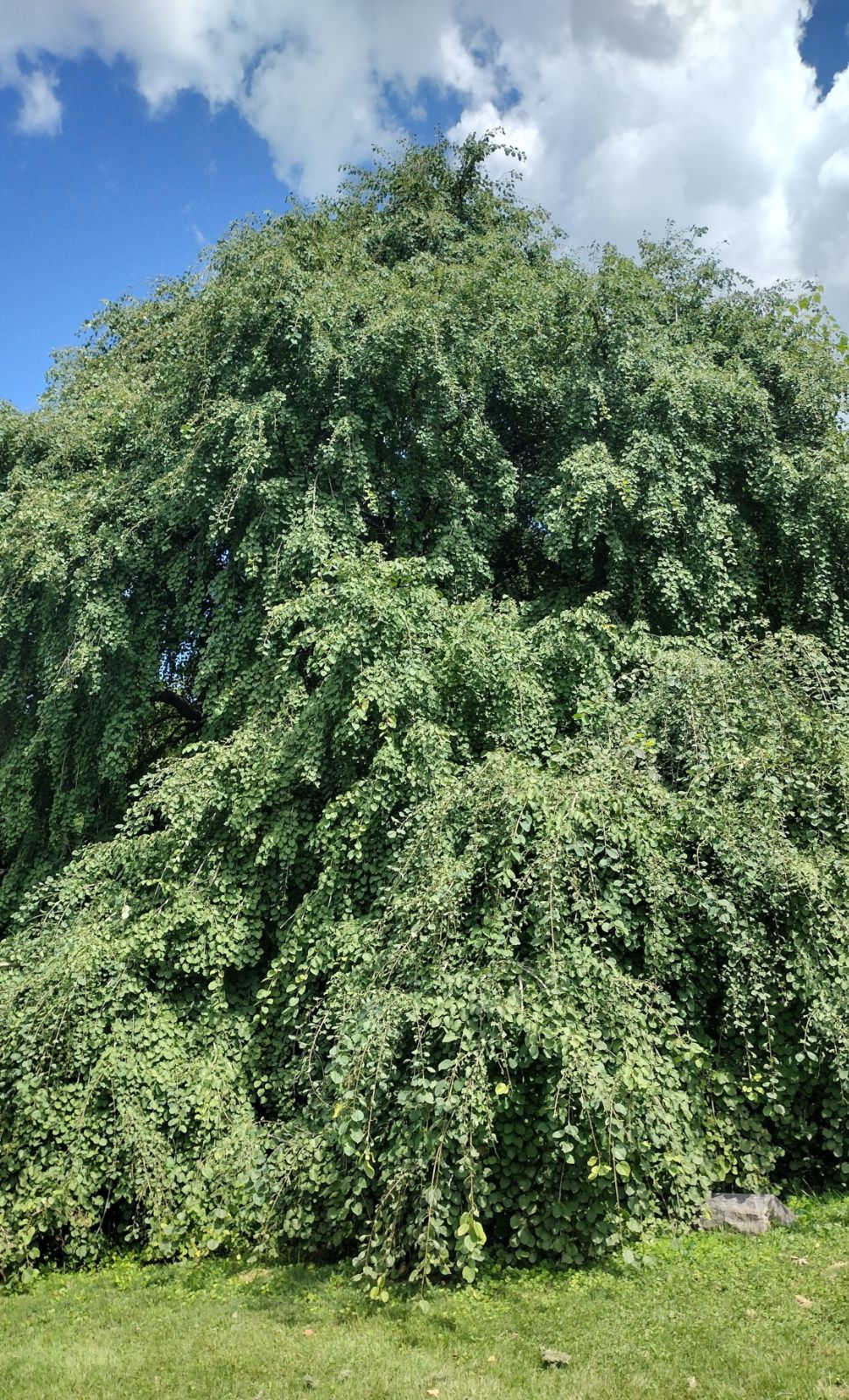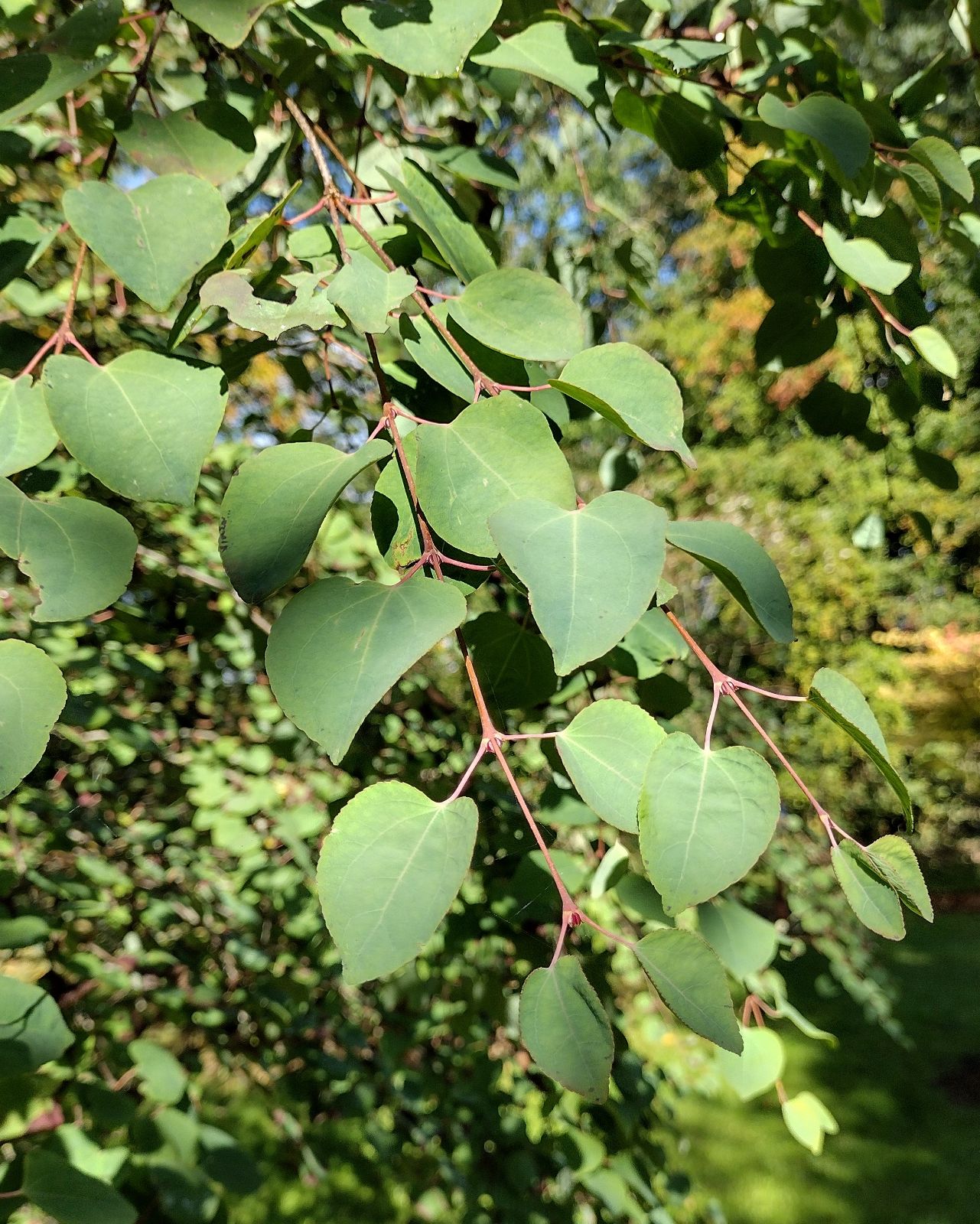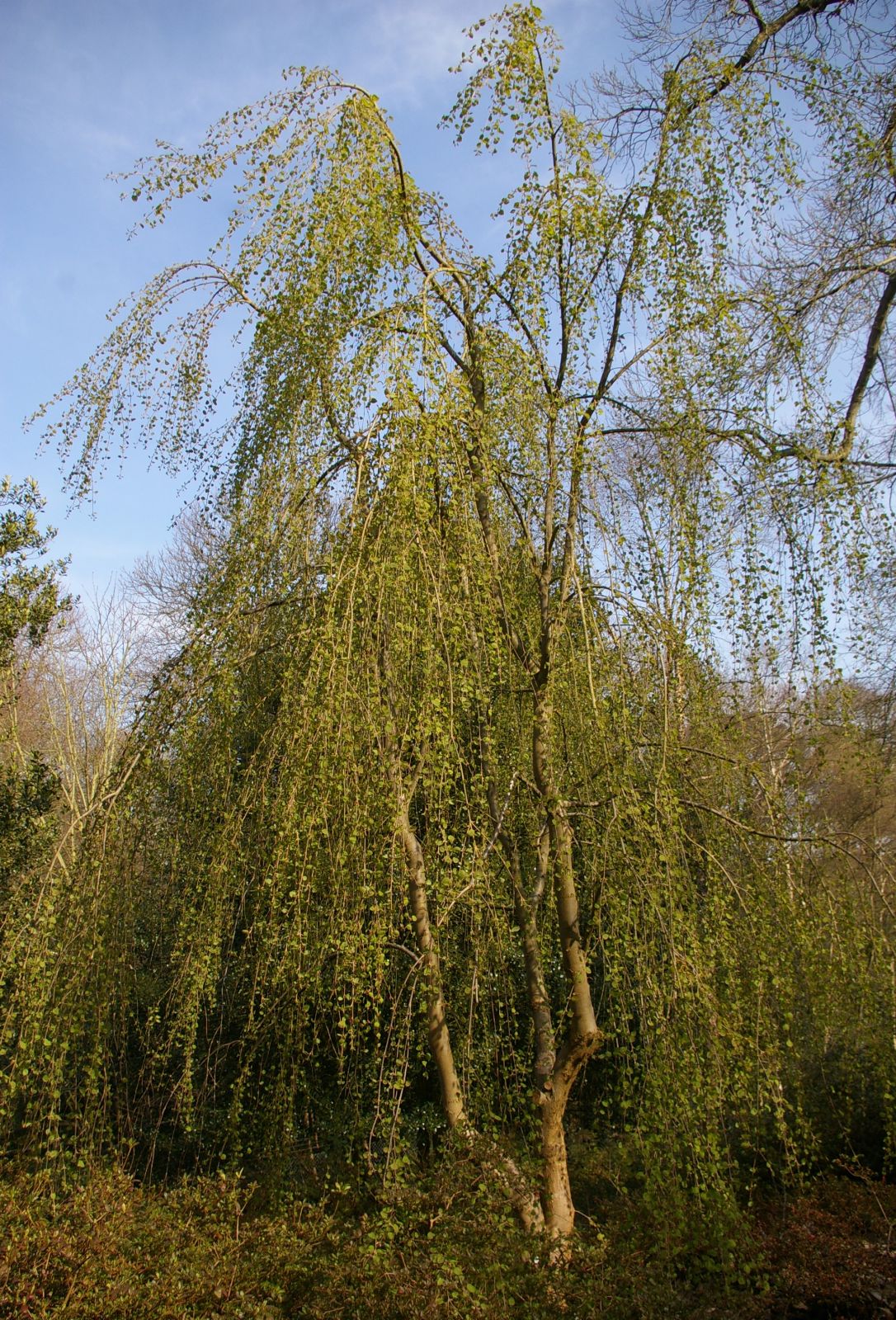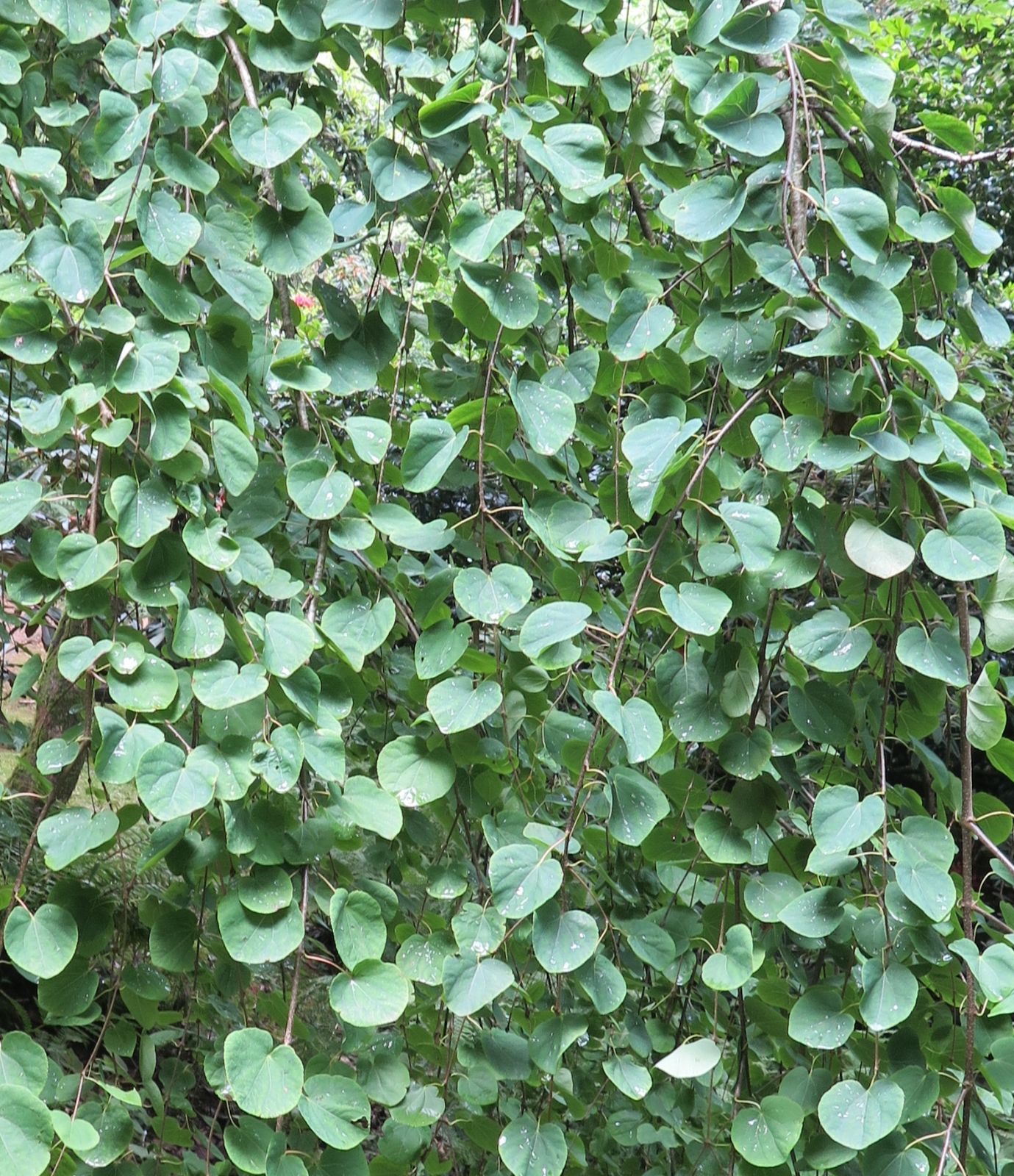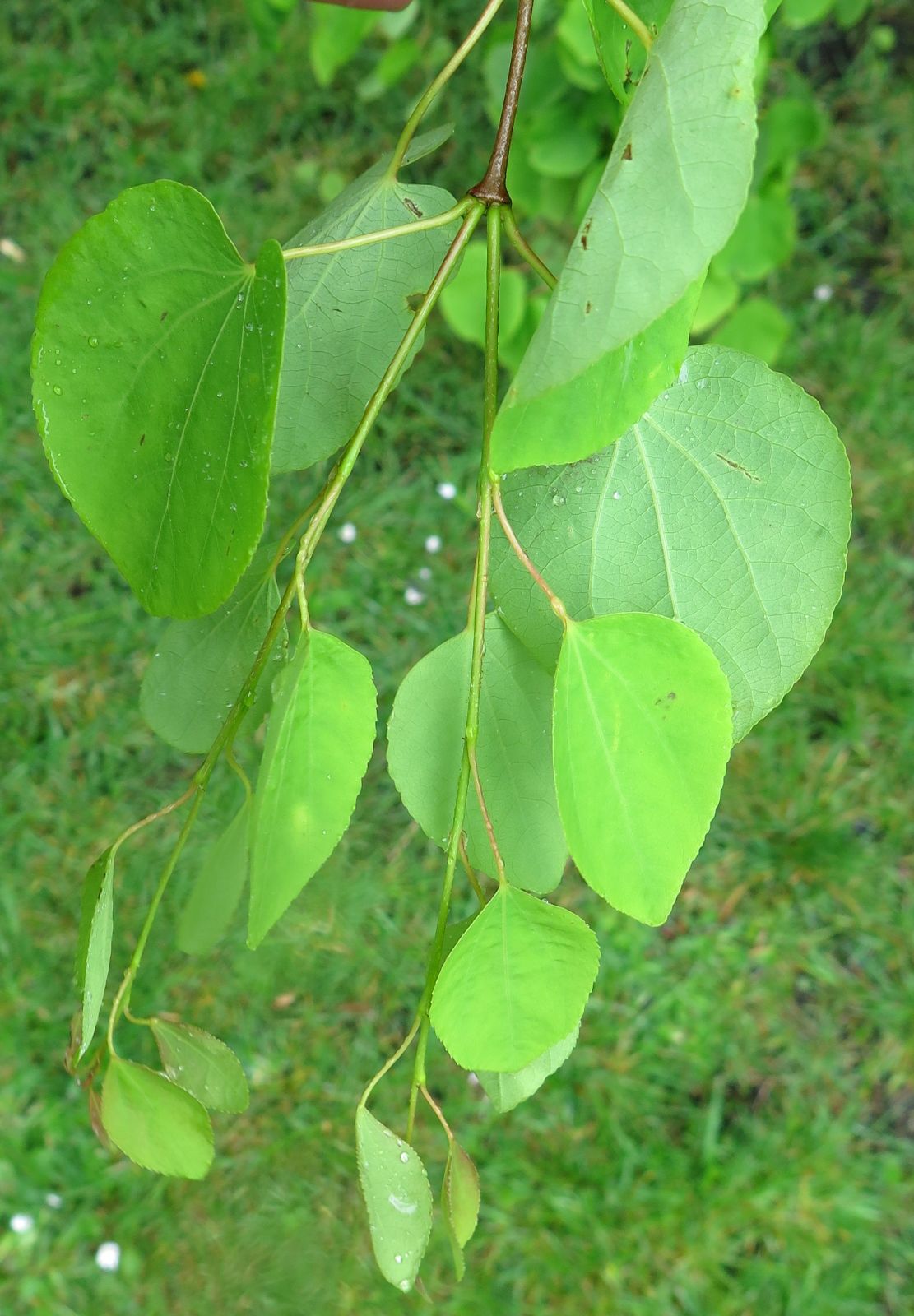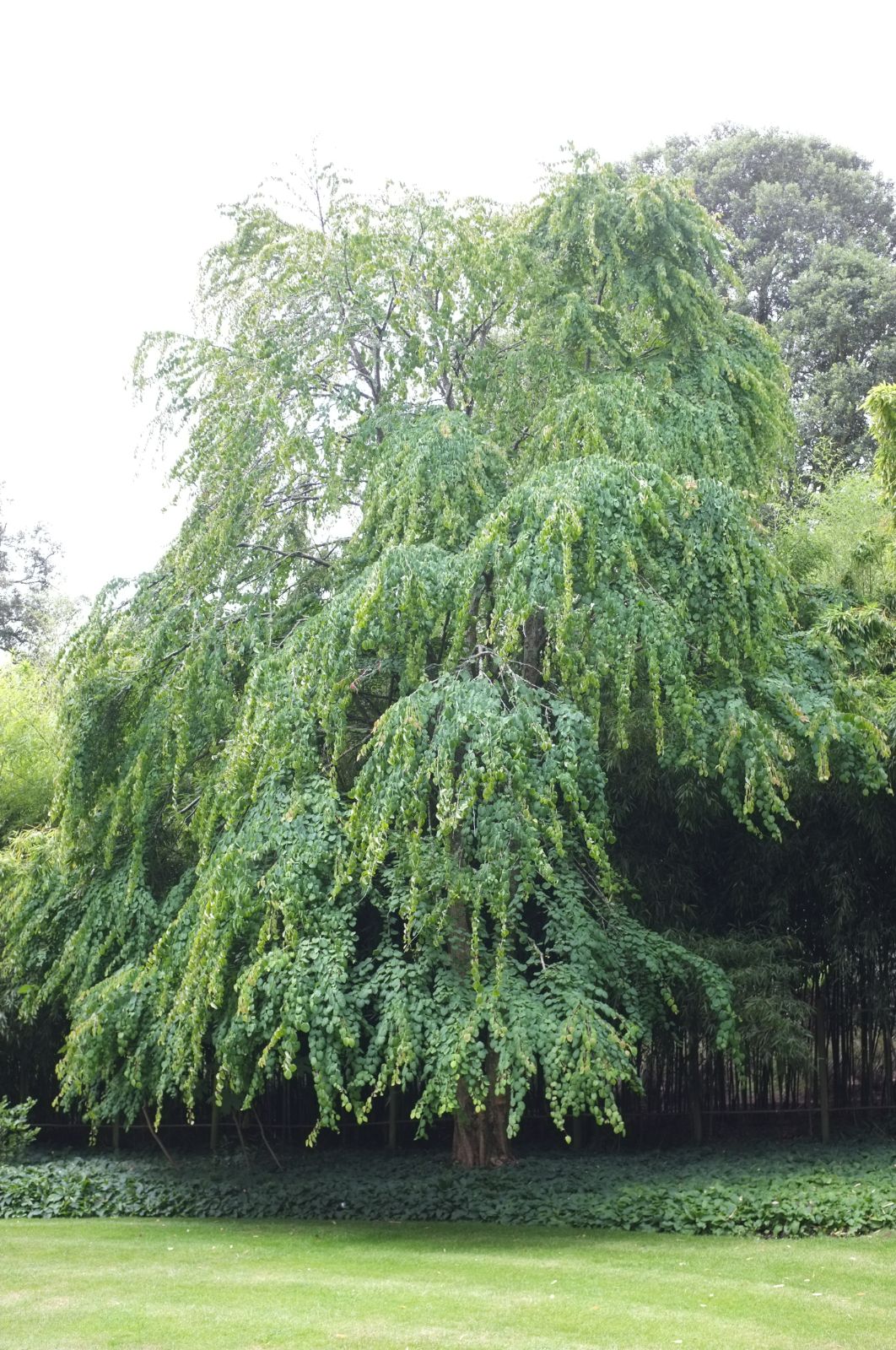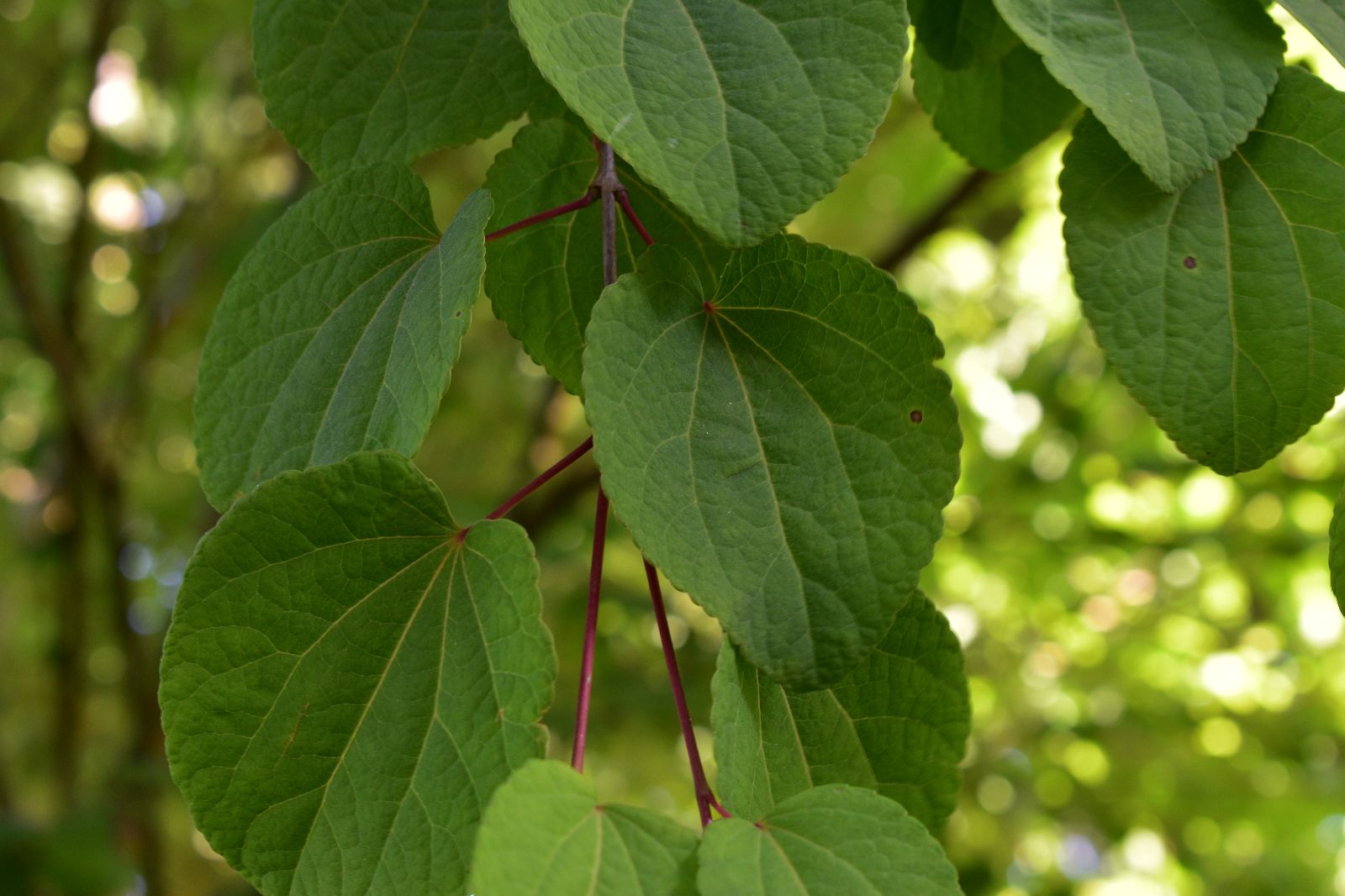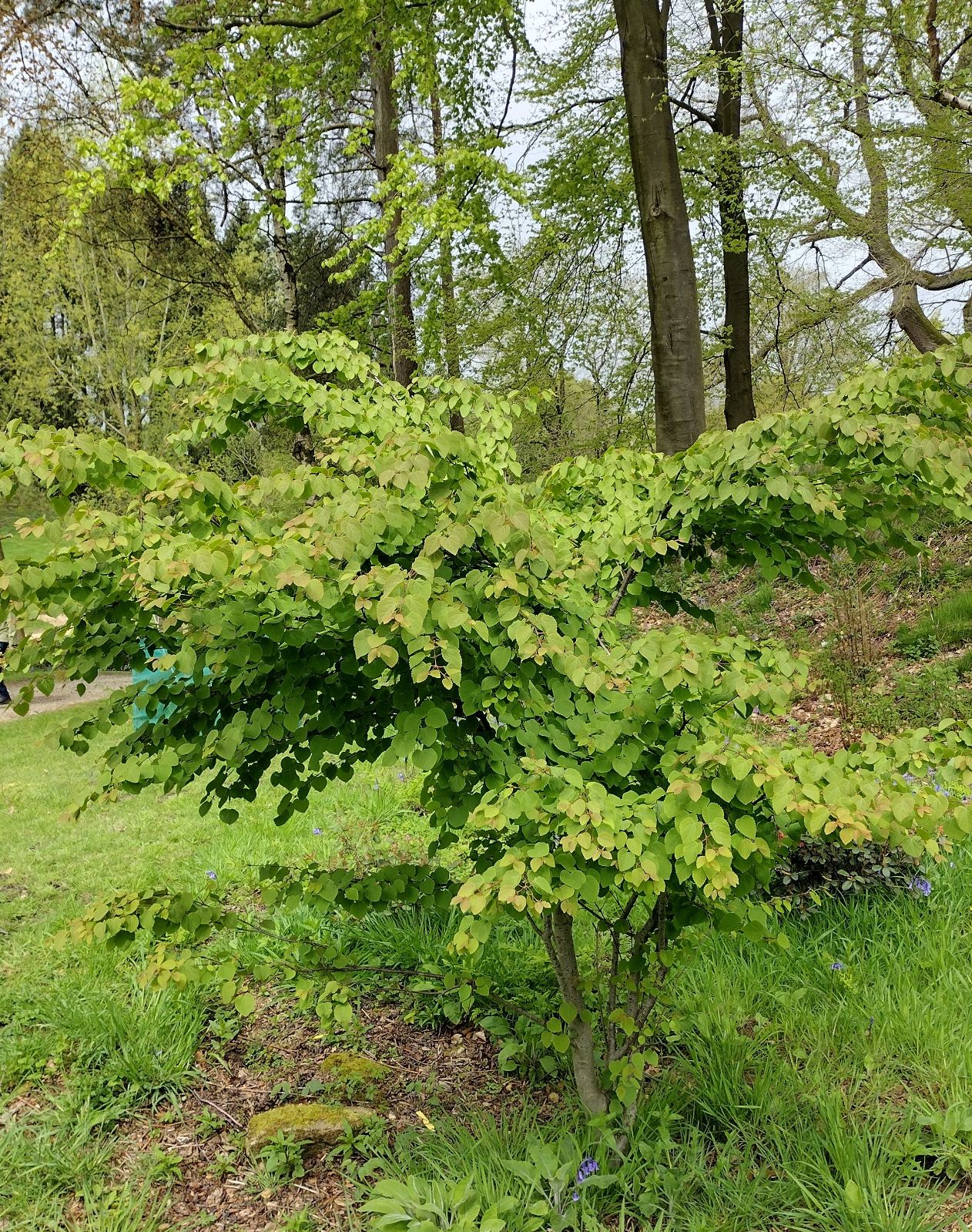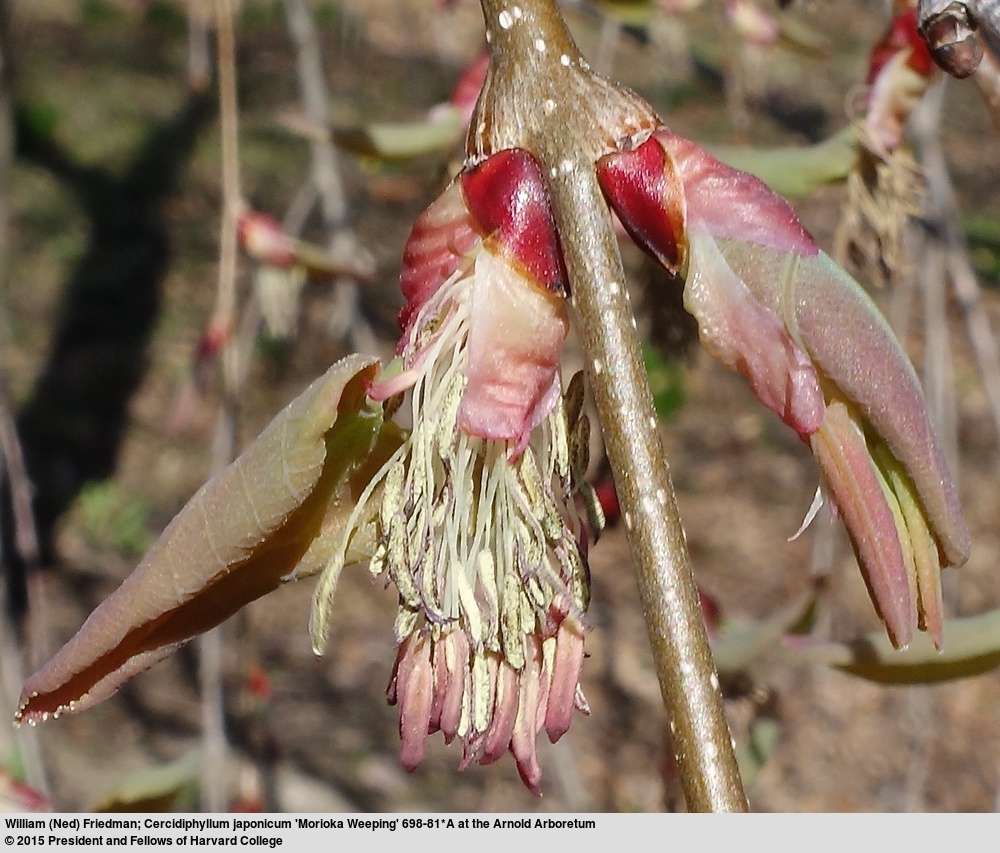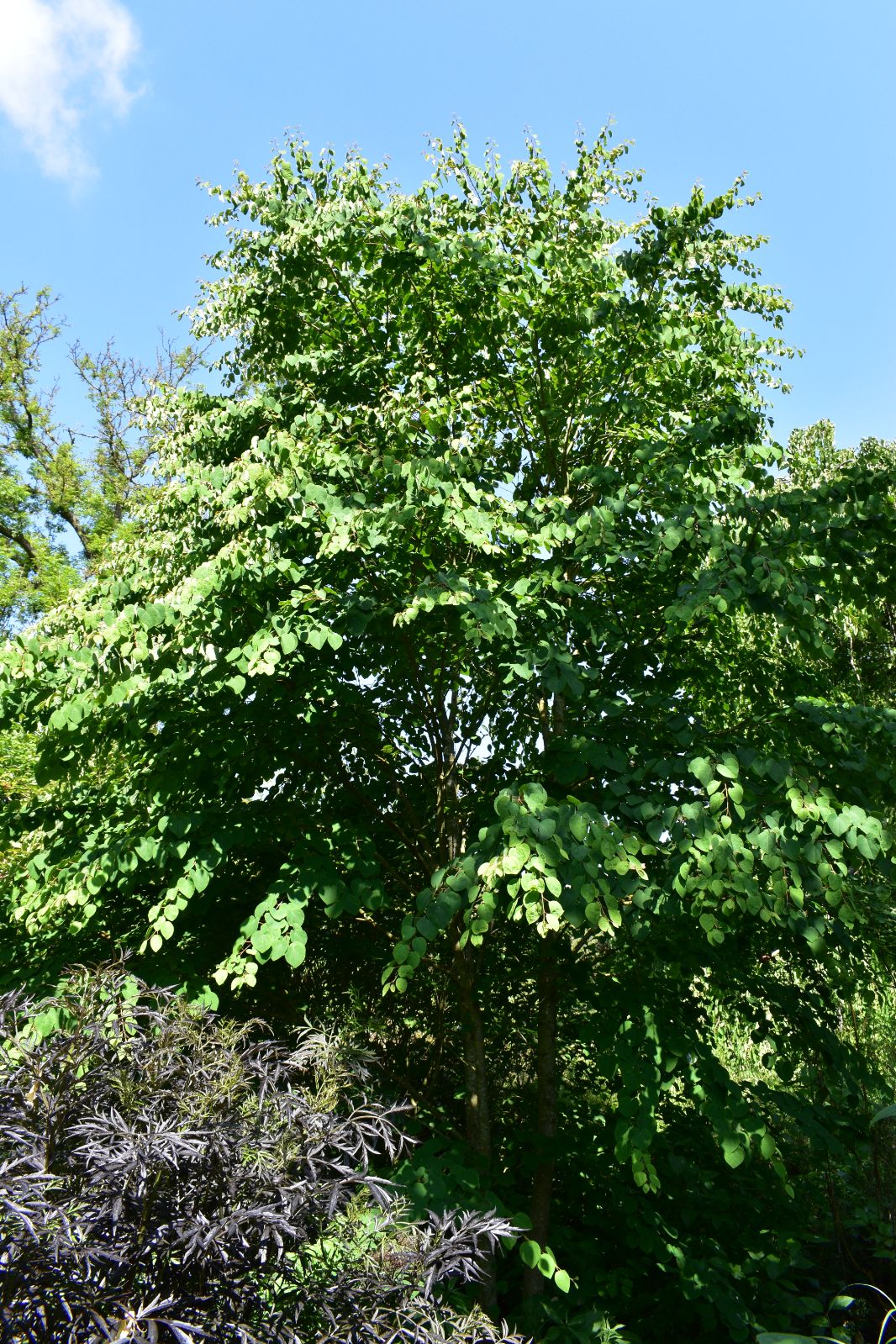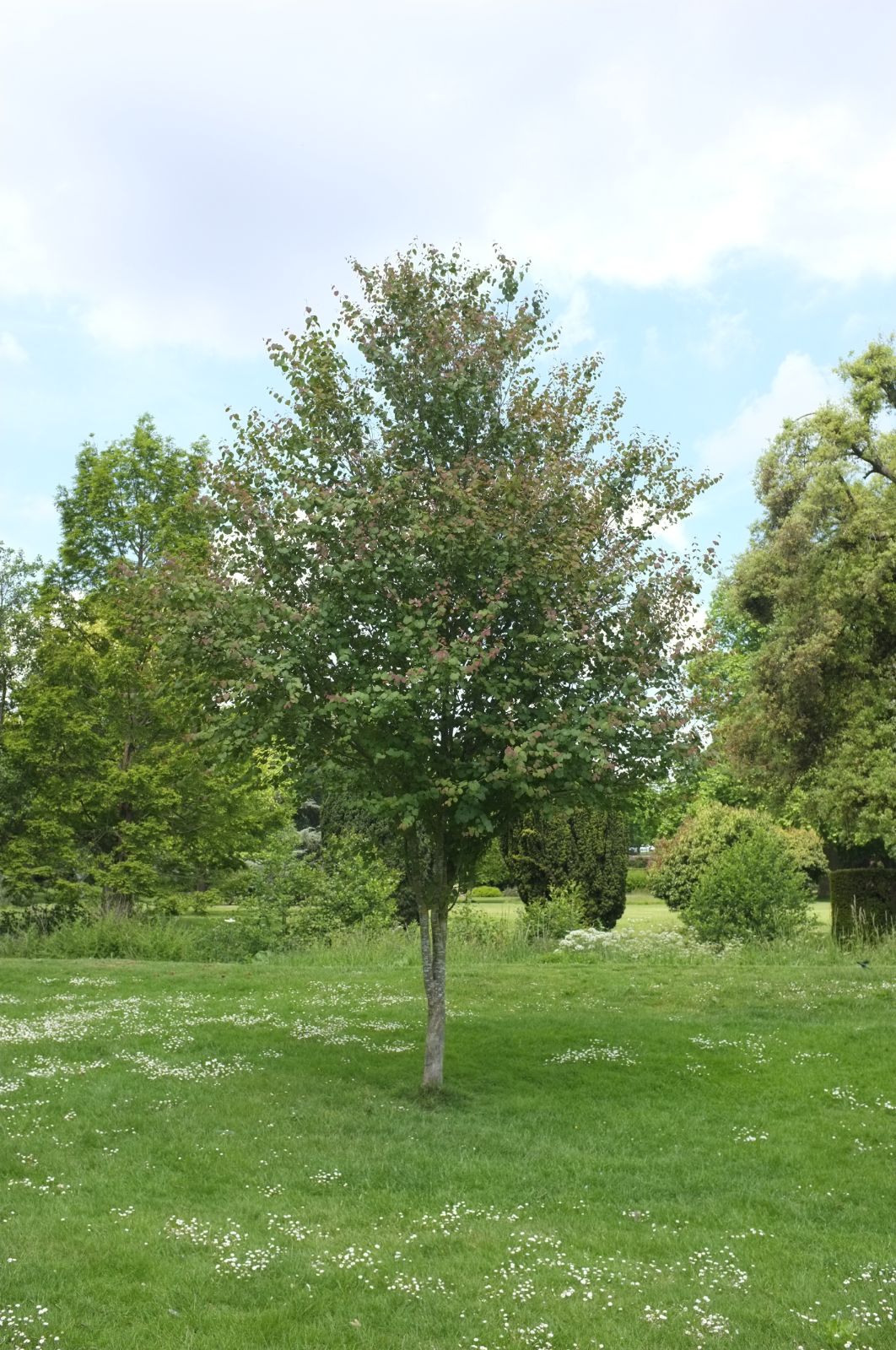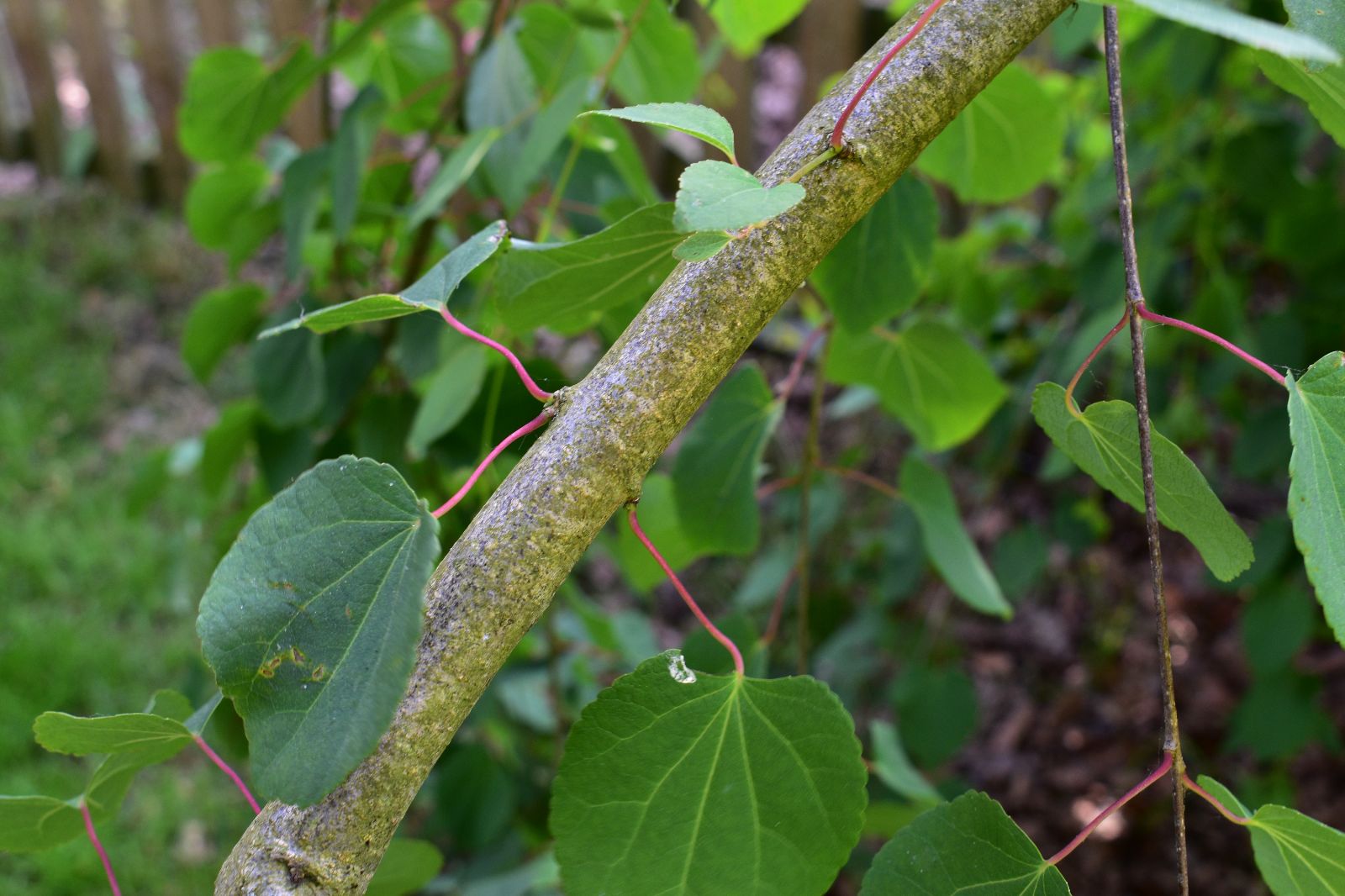Cercidiphyllum japonicum
Sponsor
Kindly sponsored by
William & Griselda Kerr
Credits
Julian Sutton & John Grimshaw (2021)
Recommended citation
Sutton, J. & Grimshaw, J.M. (2021), 'Cercidiphyllum japonicum' from the website Trees and Shrubs Online (treesandshrubsonline.
Genus
Common Names
- Katsura
- Katsuratree
- Katsuraboom/-baum
- Kuchenbaum
- Cercidophylle du Japon
Synonyms
- Cercidiphyllum japonicum var. sinense Rehder & E. H. Wilson
- Cercidiphyllum japonicum f. miquelianum Inokuma
Large tree, 10–30 m, frequently multi-stemmed. Bark with longitudinal fissures, even on young trees. Branchlets glabrous. Leaves dimorphic. Long shoot leaves: petiole 1.5–2 cm; leaf blade 3.2–4.5 × 1.9–3.2 cm, ovate, elliptic, or obovate, base rounded, truncate, or slightly cuneate, margin entire or finely serrate, apex acute. Short shoot leaves: petiole 1.4–4.7 cm; leaf blade 3.7–9 × 5–8.3 cm, ovate to reniform, base cordate, margin crenate, apex rounded. Leaf blades of all shoots glabrous, or hairy in axils of basal veins beneath. Male inflorescences: stamens ~9 mm; filaments filiform; anthers pink, 3–4 mm. Female inflorescences: carpels 1–1.5 cm; stigma red, decurrent, 2-ridged. Flowering April (China), March–April (UK); fruiting August (China). Fruit a brown to black, oblong follicle, 10–18 × 2–3 mm, with a short persistent style, usually in groups of 2–4 on a short stalk. Seeds brown and flat, 4–5 mm, with a 3–4 mm wing at the base. (Fu & Endress 2001; Crane & DuVal 2013; Bean 1976; Ohwi 1965).
Distribution China Anhui, Gansu, Guizhou, Henan, Hubei, Hunan, Jiangxi, Shaanxi, Shanxi, Sichuan, Yunnan, Zhejiang Japan Hokkaido, Honshu, Shikoku, Kyushu
Habitat Forests and forest edges, often riparian, 600–2700 m asl in China.
USDA Hardiness Zone 4-8
RHS Hardiness Rating H5
Awards AGM
Conservation status Least concern (LC)
Cercidiphyllum japonicum ranks high in the affections of many dendrologists: Michael Dirr (2009) claims that if he could use only one tree, this would be it, and one of the the present authors (JMG) finds it hard to choose between this and a normal green Beech (Fagus sylvatica) for his ‘desert island’ tree. ‘Overwhelming in overall attractiveness’ are Dirr’s words; its good points can be enumerated as: shapely form; nice bark; beautifully tinted, early-emerging foliage; attractive mature leaves; good autumn colour; the extraordinary sweet aroma of its senescing leaves, and a general tolerance of diverse growing conditions. There are no bad points – even though its flowers are inconspicuous they are produced before the leaves so abundantly as to colour the canopy in a reddish haze. Its Japanese name, katsura, has been very widely adopted as a vernacular name around the world, sometimes with the superfluous suffix -tree (-baum, -boom, etc) attached.
The remarkable biogeography of Cercidiphyllum, and especially of C. japonicum, is discussed in the generic introduction: it is the widest ranging of all the East Asian Tertiary relicts, and its populations show a great deal of genetic variation. Despite this, Chinese populations do not differ morphologically in any significant or consistent ways from those in Japan, and it would be impossible to ascribe a provenance to a cultivated tree of unknown origin. Chinese populations were formerly recognised as f. miquelianum Inokuma, which has priority over the better known var. sinense Rehder & E.H. Wilson, but we follow Flora of China (Fu & Endress 2001) in sinking these names. Individual populations may however have horticultural merits that make them worthy of collection. In both China and Japan Cercidiphyllum japonicum is said to be the largest deciduous tree: Wilson saw trees reaching 40 m in China (Sargent 1913), and measured the girth of one with a broken top at 16.7 m (Bean 1976). In Japan specimens of 30–40 m are common; Ben Jones of the Harcourt Arboretum, Oxford, likens it to Tilia × europaea in outline (pers. comm. 2020). For smaller gardens it would be worth selecting one of the more compact cultivars rather than a potentially very large wild type. Despite its huge range, wild sites in China are sparsely scattered, and it is often considered endangered there (Crane & DuVal 2013). It is more common in Japan, but typically found at low densities, and its capacity for regeneration in human-influenced forests is poorly understood (Kubo & Sakio 2020). In the wild it germinates in areas of bare soil without leaf litter cover (Kubo & Sakio 2020) and in gardens occasional seedlings will be found in bare places, such as paths.
One of the supposed characters distinguishing Chinese from Japanese populations was the idea that in China it is more often single-stemmed than multiple-stemmed, as reported by Wilson (Sargent 1913), but this is not a useful or consistent character. In general Katsura is a multistemmed tree, which frequently grows in riparian woodland in rich moist soil. It also coppices well; Tony Kirkham reports seeing multiple large trunks regenerated from stumps 5 m across in Hokkaido (Flanagan & Kirkham 2005) and the large original specimen of ‘Morioka Weeping’ derives from a regenerating shoot (Edwards & Marshall 2019). This is an important survival strategy in this very long-lived canopy tree in valley bottom sites where seedling survivorship is very low (Kubo & Sakio 2020). This attribute can be put to good use in the garden, if specimens grown in a mixed border are coppiced every few years as they are at Worcester College, Oxford, bringing the fine foliage to a lower level (S. Bagnall, B. Jones pers. comms. 2020). It can be trained to a single stem, however: a prime example of this can be seen on Battleston Hill at RHS Garden Wisley (17.2 m × 314 cm, 2019 – The Tree Register 2021).
The famous scent of burnt sugar or candy-floss (cotton-candy), released by the senescing leaves is one of the great features of this tree, often alerting one to the presence of a specimen before it is seen; sometimes it might even be the primary reason for planting it. A single substance, maltol (most familiar in the aroma of malt), is primarily responsible for the smell. It is derived from sugars; Katsura leaves contain remarkably high maltol levels, as much as 2.3%, as well as high levels of some sugars (Takaishi, Kawahara & Ikebe 1973). It is present throughout the life of the leaf, but peaks during senesence (Tiefel & Berger 1993). This is somehow a very diffuse perfume, barely (if at all) detectable from individual leaves, but the cumulative effect provides the pervasive scent that is such a delight – though not everyone can detect it (Kuklan 2014). It is also discernible when the trees are under stress, for example when young growth is frosted, or in periods of summer drought.
The Katsura is a useful and culturally significant tree. Its soft wood is used in furniture making and interior panelling (Spongberg 1979), and it is valued for goban (boards for the game of Go) due to its light colour and fine grain which allow the finely ruled lines to stand out. In China, extracts of bark and leaves have been used as both glue and birdlime (Spongberg 1979). In Chinese and Japanese culture, the tree is linked to the moon. A Chinese folk tale explains the waxing and waning of the moon by the activities of a gardener or woodsman living on the moon, eternally hacking away at a gigantic Katsura which repeatedly grows back. This is probably the origin of the Japanese ‘Cercidiphyllum-man’ katsura otoko, a sinister but beguiling lunar character who draws in moon gazers, shortening their lives in the process (Meyer 2021). It has been claimed in the West that the tree takes its name from the katsura wig sometimes worn by geishas and brides, but their relationship is perhaps less simple. The two words, both apparently very old, are homophones but are written as quite different kanji. Japanese speakers might find a metaphorical connection between them, but the suggestion that the name originated as a compound of Old Japanese words meaning ‘that which gives off a good smell’ (Wiktionary 2021) seems highly plausible.
First described scientifically in 1846, Cercidiphyllum japonicum reached Western cultivation in 1865, through seed sent to two North American nurserymen by Thomas Hogg, US Consul to Japan. A second round of introductions was of Hokkaido provenance, apparently collected by Louis Boehmer, a horticulturalist working for the Hokkaido Development Commission, who later set up the only European nursery in Japan (Andrews 1999). The great hardiness of Hokkaido populations (apparently the result of ancient introgressive hybridization with the high-altitude C. magnificum; see generic introduction) is very significant. Seed and seedlings from Boehmer came to North America with William Clark of the Massachusetts Agricultural College, Amherst; these reached the Arnold Arboretum and at least one magnificent old Katsura survived in Amherst in 1975 (Crane & DuVal 2013; Andrews 1998, 1999). The species was sent to Europe in 1880 as seed, again of Hokkaido provenance from Boehmer, to the Berlin naturalist and dendrologist Carl Bolle; the species was independently introduced to Kew a year later (Andrews 1998). There have been numerous subsequent introductions. Hardiness was more widely an issue in the early decades. This was perhaps the result of more severe winters, perhaps because hardier Hokkaido stocks had not yet risen to near-ubiquity in gardens, or maybe simply the result of poor siting (see below). Bean (1910) compared sizeable trees at the Arnold Arboretum with plants at Kew which remained scrubby bushes, their young growth being killed by frost once or even twice each spring. However, there are today impressive specimens in the London area, for example a tree measured in 2020 at 18 m × 186 cm in Cannizaro Park, Wimbledon (The Tree Register 2021). Sensible siting with shelter is advisable.
The species is now grown widely across western and central Europe, at least as far east as Poland, where there is a specimen in the Warsaw Botanical Garden (monumentaltrees.com 2021). Three extreme specimens serve to show the heights and girths so far reached: 22 m × 510 cm (2010, multistemmed) at Ashbourne House, Glounthaune, Co. Cork, Ireland (The Tree Register 2021); 25 m × 292 cm (2014, forking at 1 m) at Westonbirt, UK (The Tree Register 2021); and 28.8 m × 671 cm (2020, multistemmed) in the Stadtpark, Graz, Austria (monumentaltrees.com 2021). In Scandinavia and Finland, provenance becomes more important. Even in southern Finland, stock of uncertain wild origin from Central European nurseries suffers in cold winters, but a particularly hardy stock distributed by Gothenburg Botanical Garden thrives as far north as Oulu, at 65°N in central Finland (Arboretum Mustila 2021). In these colder areas C. magnificum may be a more reliable choice. Away from summer-dry areas, C. japonicum is widely grown across our North American area, with specimens in everything from major collections to front yards.
Cercidiphyllum will thrive best where summer moisture levels are constant and spring frosts rare. Drought in summer can cause defoliation of trees, though they rapidly leaf-out following rain or irrigation (Dosmann 1999). It is tolerant of alkalinity, as demonstrated by a fine old tree planted by H.J. Elwes growing in very shallow soil over oolitic limestone at Colesbourne Park, Gloucestershire. Two contrasting plantings at the Yorkshire Arboretum emphasize the value of shelter (JMG pers. obs.). In a grove planted in heavy clay on an open north-facing slope the trees have lost their new growth to frost in April or May almost every year. Although rapidly re-leafing, this makes for stunted growth and pointless trees; a classic example of a good plant in the wrong place. However, Cercidiphyllum grows extremely well in the shelter of nearby Ray Wood, and several specimens are set to become canopy trees. James Russell, who created this garden, underplanted some of them with Disanthus cercidifolius to play on the morphological and etymological similarities of these unrelated plants; both derive their names in part from their resemblance to Cercis foliage. Further fun could be had by creating a Cercis-Cercidiphyllum-Disanthus menage à trois, perhaps using Cercis canadensis ‘Forest Pansy’ for a multiseasonal foliage special. Adding to the mix the forms of Lindera obtusiloba with heart-shaped leaves, often labelled L. cercidifolia, would give yet more opportunities to trick the unwary.
Katsuras can be relied on for autumn colour, less so for its timing and hue, which ranges from yellow through orange to pink and red, often mixed on the tree (Bean 1976). Those which colour red have always been prized: this is more than simply seasonal variation. Such a specimen, from EHOK 43 at Howick Hall, Northumberland, caught the eye of one of us (JS) in several consecutive years, although a different individual from the same collection turned an almost uniform, dazzling red at the end of the hot, dry summer of 2022. Several clonal cultivars have been selected for their autumn colour (see below). Seedlings from a collection (SICH 1210 of 1992) made at c. 2420 m in Zhaojue County, Sichuan, proved to have strongly red-tinted new growth (and good autumn colour) when grown at Kew; this is passed on to second generation seedlings. In the end, though, clonal differences are not extreme; Barry Clarke’s experiences with the National Collection at the Sir Harold Hillier Gardens, Hampshire, lead him to the conclude that ‘autumn colour seems to be pretty similar across the cultivars’ (pers. comm. 2021).
Cultivars have been selected for several traits; they are usually grafted onto seedling stocks:
compact growth: ‘Boyd’s Dwarf’/’Herkenrode Dwarf’, ‘Heronswood Globe’, ‘Jww4’, also ‘Kreukenberg/Krukenberg/Kruckenberg Dwarf’, ‘Compact Globe’
narrow crown: ‘Biringer’, ‘Dawes Ascension’
weeping (f. pendulum): ‘Amazing Grace, ‘Morioka Weeping’, ‘Tidal Wave’
red/pink/purple tints: ‘Raspberry’, ‘Rotfuchs’, ‘Ruby’, ‘Strawberry’
yellow leaves in summer: ‘HSI1’, ‘Jww3’, also ‘Aureum’
variegated leaves: ‘Chameleon’
scent of senescing leaves: ‘Peach’.
'Amazing Grace'
A weeping cultivar (f. pendulum) which does not produce a leader, making a mound-like crown, perhaps to 10 m tall eventually. Selected around 1960 by Theodore Klein, Yew Dell Nursery, KY, USA (Dosmann et al. 2003; Dirr 2009; Bluebell Arboretum and Nursery 2021).
'Biringer'
Synonyms / alternative names
Cercidiphyllum japonicum HANNA'S HEART®
Selected for narrower branch angles (and hence narrower form, at least in youth), somewhat reduced vigour, and better than usual cold hardiness with delayed leaf senescence. Summer foliage dark green, yellow autumn colour. Selected by the Biringer Nursery, WA, USA in 2003–4, and propagated both by chip budding and cuttings rooted in mist, and widely marketed in North America. Plant Patent 21,711 granted 2011. (Hatch 2020; Google Patents 2011)
'Boyd's Dwarf'
Slow growing with small leaves, perhaps the most compact cultivar, reaching about 4 m × 4 m, with yellow autumn colour; origin unknown, before 2000 (Edwards & Marshall 2019; Dirr 2009; Bluebell Arboretum and Nursery 2021; Junker’s Nursery 2021). ‘Herkenrode Dwarf’ is similar; Dirr (2009) lists it as a synonym of ‘Boyd’s Dwarf’, and perhaps significantly Arboretum Wespelaar, Belgium (adjacent to the Herkenrode garden) lists only ‘Boyd’s Dwarf’ (Plantcol 2021).
Enquiries among gardeners in the Pacific Northwest have neither confirmed or denied a memory in John Grimshaw’s head that this was selected in Oregon by the late Boyd Kline (1918–2014), co-founder of Siskiyou Rare Plant Nursery. If anyone knows more about the history of this plant please get in touch.
'Chameleon'
Irregularly variegated, the non-green parts of the leaves yellowish at first, later white (Bluebell Arboretum and Nursery 2021; Plantentuin Esveld 2021). Origin unknown, probably European; in European nurseries by 2012.
'Dawes Ascension'
Narrow-crowned, at least in younger trees, probably broadening in maturity. Originated at the Dawes Arboretum, OH, USA, before 1993, and available in the North American trade (Hatch 2020; Dawes Arboretum 2021).
f. pendulum (Miyoshi) Ohwi
Common Names
Shidare-katsura
Synonyms
Cercidiphyllum japonicum 'Pendulum'
Cercidiphyllum magnificum 'Pendulum'
Cercidiphyllum japonicum Weeping Group
Awards
AGM
This name covers cultivated and rare wild forms with pendulous branches (Iwatsuki, Boufford & Ohba 2006; Dosmann et al. 2003). Such forms have been grown in Japan at least since the 17th century. ‘Amazing Grace’, ‘Morioka Weeping’ and Tidal Wave’ (q.v.) belong here, as well as various unnamed clones of less certain origin. All are male (Dirr 2009). Most clones tend not to produce a strong central leader; ‘Morioka Weeping’ stands alone in typically making one, and can become a tall tree (Dosmann et al. 2003). These cultivars are normally grafted on seedling C. japonicum, usually on a tall stock, to produce a strongly weeping specimen. Given sufficient time, any could perhaps make a 10 m tree, ‘Morioka Weeping’ a much taller one.
Spongberg (1979) made the surprising claim that these weeping forms produce only long shoots with typical long-shoot leaves, while admitting that further study of cultivated material was required. At least one of the present authors (JS) has never seen a plant which behaves like this, only weeping forms with both short and long shoots (see photograph).
The classification and naming of these plants has proved troublesome. For many years, all but the recent American ‘Amazing Grace’ and ‘Tidal Wave’ were usually labelled C. japonicum ‘Pendulum’, a name which might imply a clonal cultivar (which it never was), is probably invalid (being Latinized and probably published after 1959) and redundant, given that the name f. pendulum already existed (Dosmann et al. 2003). The idea of placing them in a cultivar group, C. japonicum Weeping Group (Li et al. 2002) is redundant for the same reason. Even the species attribution was at one time challenged, Spongberg (1979) placing all weeping katsuras in C. magnificum, also speculating that they might be interspecific hybrids; however, a molecular study (Li et al. 2002) showed that all known cultivated clones belong in C. japonicum.
Plants labelled as either simply f. pendulum or ‘Pendulum’ in nurseries might belong to any weeping clone – caveat emptor. It is unfortunate that the Royal Horticultural Society’s Award of Garden Merit was not awarded to a specific cultivar.
'Heronswood Globe'
Awards
AGM
A compact, bushy selection which nevertheless tends to produce a central leader; initially slow-growing, it may ultimately reach about 6 × 6 m; creamy yellow to pink autumn colour. Introduced 1991 by Heronswood Nursery, WA, USA. (Jacobson 1996; Edwards & Marshall 2019; Dirr 2009)
'HSI1'
Synonyms / alternative names
Cercidiphyllum japonicum CLAIM JUMPER™
Leaves with a pink blush on emergence, yellow once expanded. Leaves in sun remain yellow or whitish in sun, those in shade turning green. A site with late-afternoon shade is recommended to avoid excessive bleaching (Heritage Seedlings & Liners 2021). Introduced before 2018 by Heritage Seedlings, OR, USA; widely marketed in North America under the trade designation CLAIM JUMPER™, and beginning to appear in European collections. A claim jumper is a miner dishonestly working another’s claim; the term dates from the 19th century American gold rushes.
'Jww3'
Synonyms / alternative names
Cercidiphyllum japonicum RA
Emerging leaves orange-red on reddish stems, maturing to yellow or yellow-green. A seedling selection made in 2010 by Jan-Willem Wezelenburg, The Netherlands; protected by European plant breeders’ rights, and US Plant Patent 25,096 granted 2014. (Google Patents 2017; van Vliet New Plants 2021)
'Jww4'
Synonyms / alternative names
Cercidiphyllum japonicum GLOWBALL
A very compact, bushy cultivar tending not to produce a leader; plants grafted near ground level may eventually reach 3–4 × 3 m. Young growth bronze-orange, autumn colour yellow to orange. A seedling selection made in 2008 by Jan-Willem Wezelenburg, The Netherlands; protected by European plant breeders’ rights, and US Plant Patent 28,058 granted 2017. (Bluebell Arboretum and Nursery 2021; Justia Patents 2021)
'Morioka Weeping'
The earliest-documented of the weeping forms (f. pendulum), unique among them in producing a strong leader. As a result of this, it forms a much more upright tree than the others, yet still with beautiful pendent branches, eventually making a tall crown with a rounded top (Dosmann et al. 2003; Edwards & Marshall 2019). Like other weeping clones, it is a male. The original tree was collected in the wild in Iwate Prefecture, northern Honshu, Japan and transplanted to the grounds of a temple near Morioka sometime between 1574 and 1635 (Dosmann et al. 2003). Felled for timber in 1824, a basal sucker had reached about 22 m × 3.5 m by 1998 – this is protected as a national monument (Iwate Prefecture Cultural Promotion Division 2004); other suckers have been transplanted to sites around Morioka. Scionwood from one of these was sent to the Arnold Arboretum in 1981; from this it was established in Western cultivation,
'Peach'
Orange/red/pink autumn colours are claimed (Frank P Matthews 2021; Bluebell Arboretum and Nursery 2021), along with a suggestion that the autumn leaf smell might be more peach-like than the norm (some cast doubt on this – Plantentuin Esveld 2020 and it seems likely to be an invented marketing tale). As with ‘Raspberry’ and ‘Strawberry’, ‘Peach’ was selected for its autumn colour by Jelena de Belder, probably at Hemelrijk, Belgium; all three are grown at Arboretum Kalmthout (A. Rammeloo, pers. comm. 2021). ‘Peach’ was offered in European nurseries by 2008.
'Raspberry'
Selected for red autumn colour by Jelena de Belder (see ‘Peach’), before 2006 (Plantentuin Esveld 2021; Kwekerij Arborealis 2021). In the nursery trade on both sides of the Atlantic.
'Rotfuchs'
Synonyms / alternative names
Cercidiphyllum japonicum RED FOX
Leaves matt purple, redder on emergence; crown narrow when young; vulnerable to late frosts. A male clone (B. Clarke pers. comm. 2021). Raised in 1977 by Karl Fuchs, Neunkirchen, Germany, from seed collected at the Exotenwald, Weinheim (Edwards & Marshall 2019; van den Berk Nurseries 2021). It can be a useful ‘upright’ in a mixed planting, especially in a limted space. The foliage may becomes bronze rather than purple later in the season (Dirr & Warren 2019); this might be more pronounced in some climates.
'Ruby'
Emerging leaves more definitely red than the usual coppery flush; selected by PMA Plant Specialities (Junker’s Nursery), Somerset, UK, before 1994 (Junker’s Nursery 2021).
'Strawberry'
Selected for autumn colour, with pink leaves among the yellow; emerging foliage red (Bluebell Arboretum and Nursery 2021; Edwards & Marshall 2019). As with ‘Raspberry’ and ‘Peach’ it was selected by Jelena de Belder before 2001; in nurseries on both sides of the Atlantic.
'Tidal Wave'
A vigorous, strongly weeping cultivar which does not produce a leader, making a mound-like crown, perhaps 10–12 m tall eventually; foliage blue-green in summer. Belonging to f. pendulum, it was selected before 1995 by H.W. ‘Bill’ Barnes of Lorax Farms, PA, USA and is marketed on both sides of the Atlantic (Dosmann et al. 2003; Edwards & Marshall 2019; Bluebell Arboretum and Nursery 2021). It is usually top grafted; low grafts will initially trail across the soil: ‘one plant I had took off from the container like a tsunami; snakes along the ground in reptilian fashion’ (Dirr 2009).

